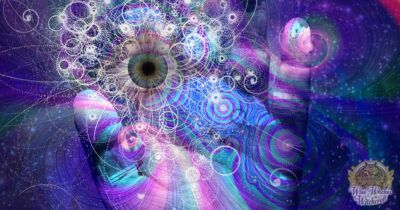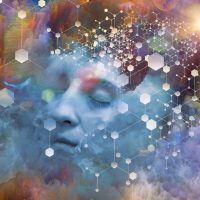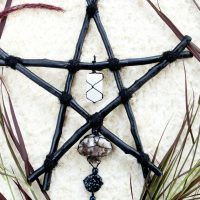Pagan Symbols and Meanings
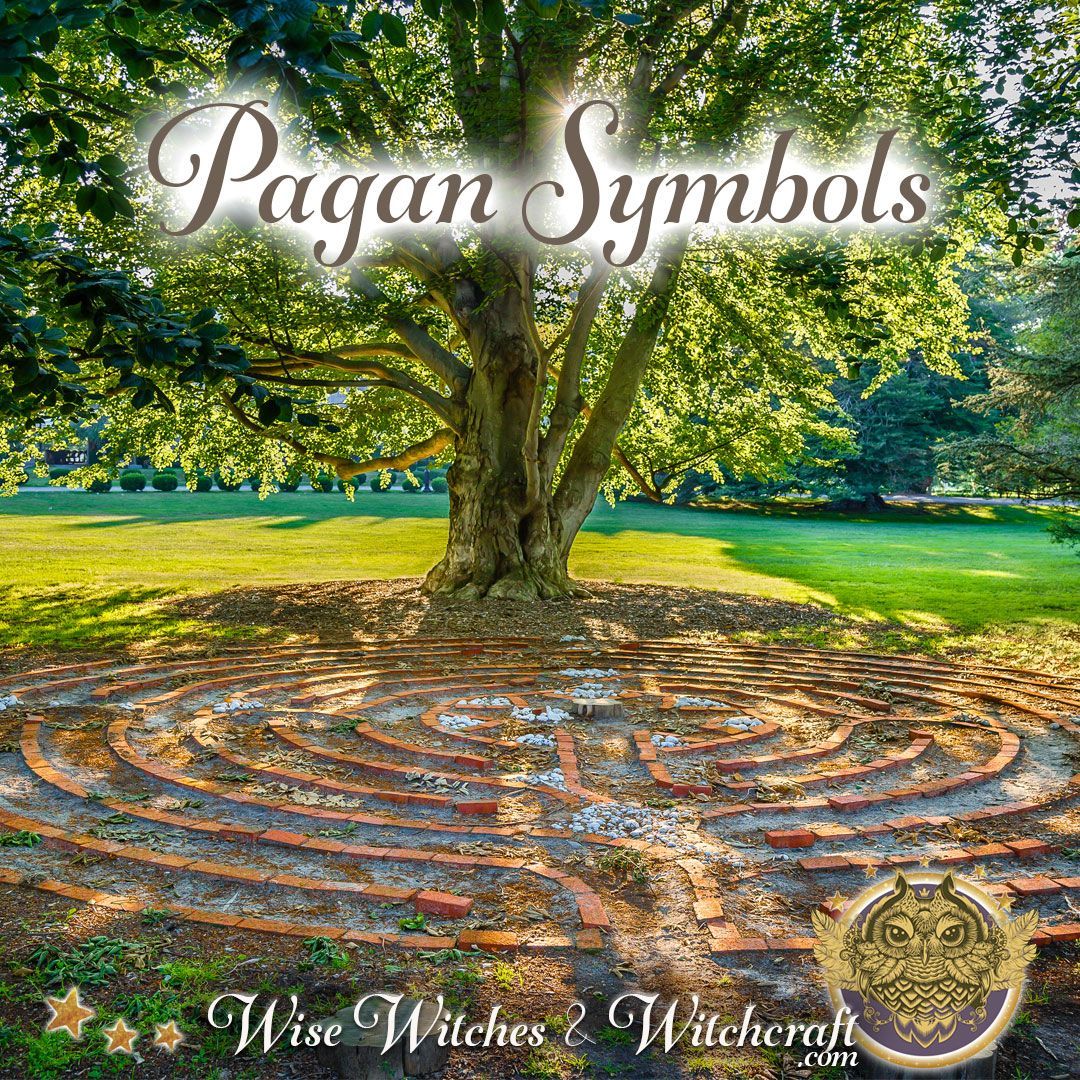
“In fact, words are well adapted for description and the arousing of emotion, but for many kinds of precise thought other symbols are much better.”
– John B. S. Haldane
So, you wonder what are pagan symbols? What do those weird markings mean, anyway? People new to the world paganism, you might have familiarity with a few pagan symbols. Others might have an intimate knowledge of pagan symbols and definitions.
A simple definition suggests pagan symbols represent an idea, person, thing, or concept. A symbol is something representing something else. Symbols often encapsulate or simplify what icon represents. Pagan symbols hold meaning that relates to what the symbols represent.
Sounds like you just left a philosophy class in college, right? Does your brain feel like soup yet? Good! It means your mind is expanding! It means you’re on the right track!
Pagan symbols and their use is a common practice in many pagan communities. Symbols serve as identification. They are visual icons or ideas conveying meaning to anyone who encounters them. Here’s the thing though, for symbols and their meaning, the definition is all in the eye of the beholder!
Pagan Symbols and What They Mean Table of Contents
- Interpreting Pagan Symbols
- A Pagan Symbols Guide
- Pagan Symbols and Meanings of Moon Phases
- Full Moon Pagan Symbols and What They Mean
- Waning Moon Pagan Symbols
- Pagan Sun Symbols
- What Are Pagan Symbols for the Sun?
- Pagan Symbols for the Gods and Goddesses
- More Common Pagan Symbols and Their Meanings
- Pagan Symbols, Planets, and Astrology
- Pagan Symbols and What They Mean in Astrology
- Using Pagan Symbols in Astrology
- Zodiac Signs and Pagan Symbolism
- Pagan Symbolism and Planetary Hours
- Remaining Planetary and Celestial Symbols
Interpreting Pagan Symbols
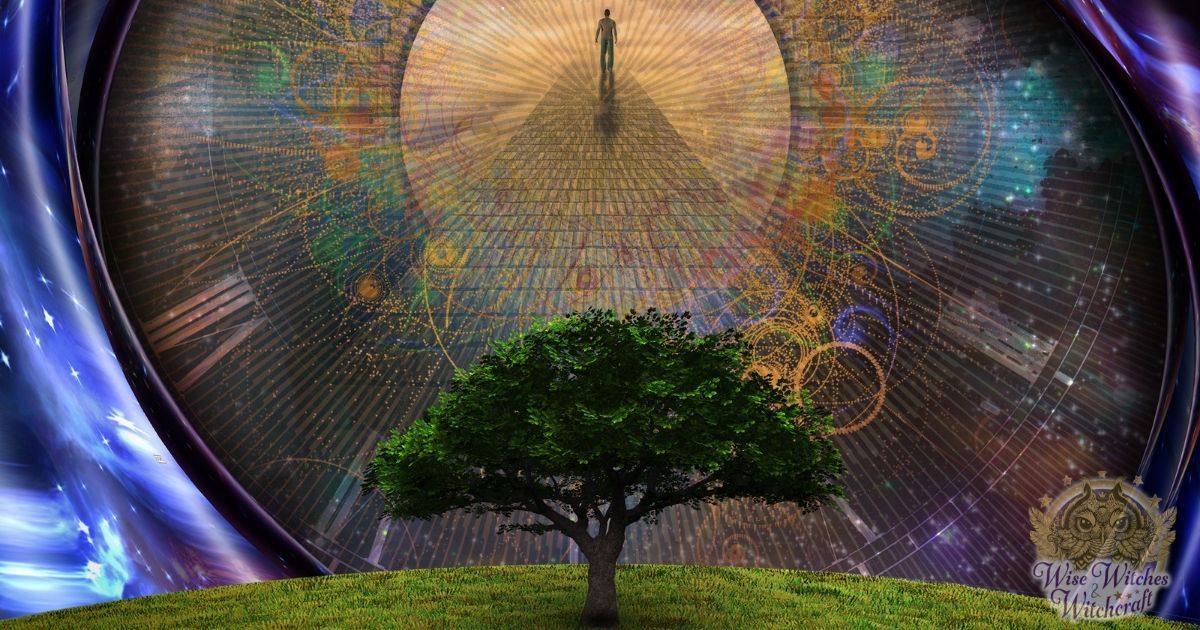
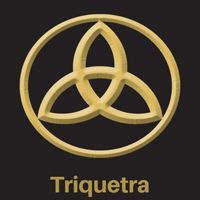 Symbols are a lot like poetry. They pack a ton of information into a small visual icon or into a simple idea. Some symbols are cross-cultural or cross the boundaries of opposing religions! For instance, there are pagan symbols in Christianity.
Symbols are a lot like poetry. They pack a ton of information into a small visual icon or into a simple idea. Some symbols are cross-cultural or cross the boundaries of opposing religions! For instance, there are pagan symbols in Christianity.
One example of a Christian symbol with pagan meaning is the Celtic triquetra. You’ve probably seen the symbol before on the Book of Shadows’ cover in “Charmed.” When looking at this symbol for its flexibility in meaning, you’ll find just how rich and diverse a single symbol can be.
A triquetra is a triune or pagan symbol signifying the entirety or “all-encompassing” nature of the Divine. Now, when looking at this symbol for its flexibility in meaning, you’ll find just how rich and diverse a single symbol can be. A triquetra is a triune or pagan symbol signifying the entirety or “all-encompassing” nature of the Divine. It’s three aspects align with the Maiden, Mother, and Crone aspects of the Divine Feminine. And an alternative correspondence for the symbol aligns with the three stages of womanhood which also embody the essence of the Goddess in all her aspects.
[wisew_rectangle_large align=”left”]The word “triquetra” originates from the word “trequetrus,” which is a Latin term meaning “triangular” or “having three corners.” The design is a lovely Celtic knot in the shape of a trefoil leaf. Each part of the leaf is reminiscent of the vesicae piscis.
An alternative name for this knot is the “trinity knot.” The significance of the knot design represents the ever-changing, ever-returning or cyclical nature of time and the lasting and unbreakable interconnectivity of the infinite.
Viscae piscis means “bladder of the fish,” and when you look at a Celtic Knot, it looks like three small fish woven together. For Christians, the three fish are reminiscent of the ichthys: A symbol for Christ. For pagans, the Celtic Knot also come to represent the omniscience, omnipresence, and omnipotent nature of the Divine (whether feminine, masculine or androgynous) coursing through and interacting with all things.
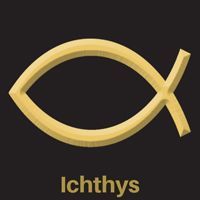 But, the triquetra through a Christian lens represents Christ. It also signifies the Holy Trinity or the Father, Son, and Holy Ghost. Some liken the three sections of the triquetra to the fish sign corresponding to Christ. It’s easy to compare them to the tasty orange Pepperidge Goldfish treats too! (wink!)
But, the triquetra through a Christian lens represents Christ. It also signifies the Holy Trinity or the Father, Son, and Holy Ghost. Some liken the three sections of the triquetra to the fish sign corresponding to Christ. It’s easy to compare them to the tasty orange Pepperidge Goldfish treats too! (wink!)
A triquetra has portions within it that look like the ichthys. It’s a symbol featuring two arcs that intersect. Its shape has a fishlike appearance. Thus, the symbol is the “Jesus Fish,” or the “Sign of the Fish.” The ichthys is but one example of many symbols with different meanings. A symbol’s significance stems from various religious, cultural, or personal understandings.
A Pagan Symbols Guide
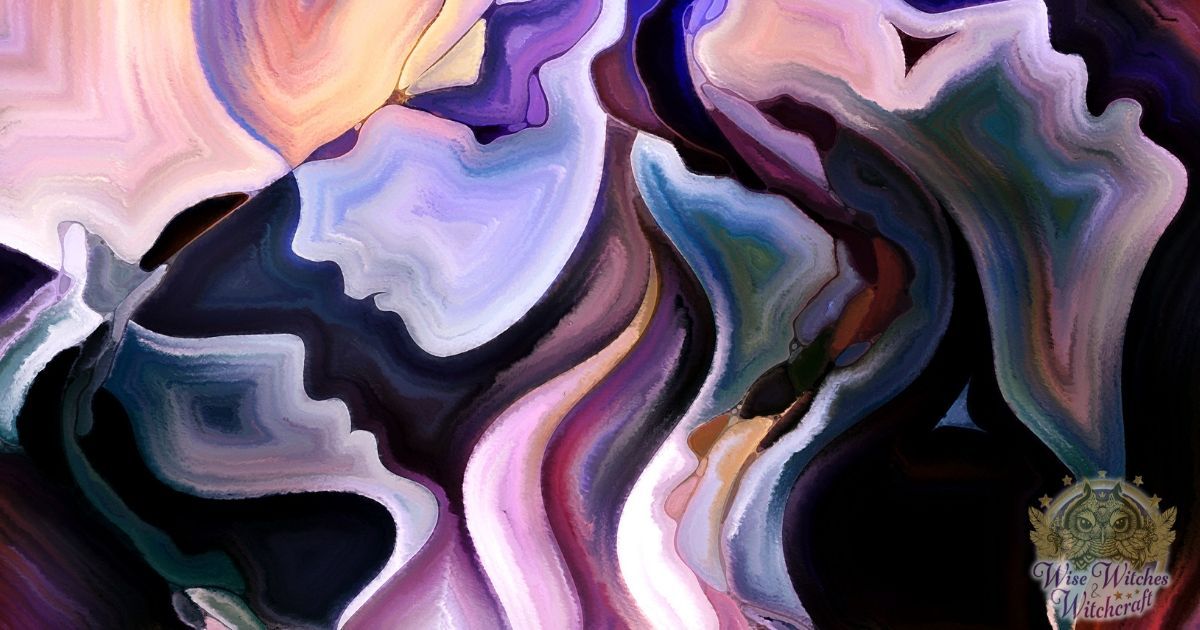
“The whole world has gone back to something we are genetically engineered to do – communicating through symbols.”
– James Woods
Many universal symbols have more than one meaning. Thus, the list of pagan symbols is endless. Please note it is impossible to cover every single pagan symbol there is in this article. Here, we will examine some of the most common pagan symbols. We will explore symbol design and the practical applications of symbols. This sampling we present will give you a good sense of pagan symbolism, its interpretation, and its use.
The pagan symbols we’ll cover in this particular article will have a primary focus on deity and celestial pagan symbols. (Keep your eyes out folks, there are so many more symbols to examine! We’ll be adding more material on a regular basis!)
Let this be a good launching point for further research into the world of pagan symbols and images. Below, you’ll find many pagan symbols and themes with distinct categories. You’ll also find symbols that don’t have personalized meanings for you already. Your knowledge, life experiences, and current understanding of symbols play a role in how you identify with the following symbols we’ll examine in depth below. You’ll also find the more you learn about the Craft and the adept you become in the practice of magick, the deeper the meanings you’ll find in many of the symbols Pagans, Wiccans, and Witches use to represent magical ideas, sacred concepts, and their beliefs.
Pagan Symbols and Meanings of Moon Phases
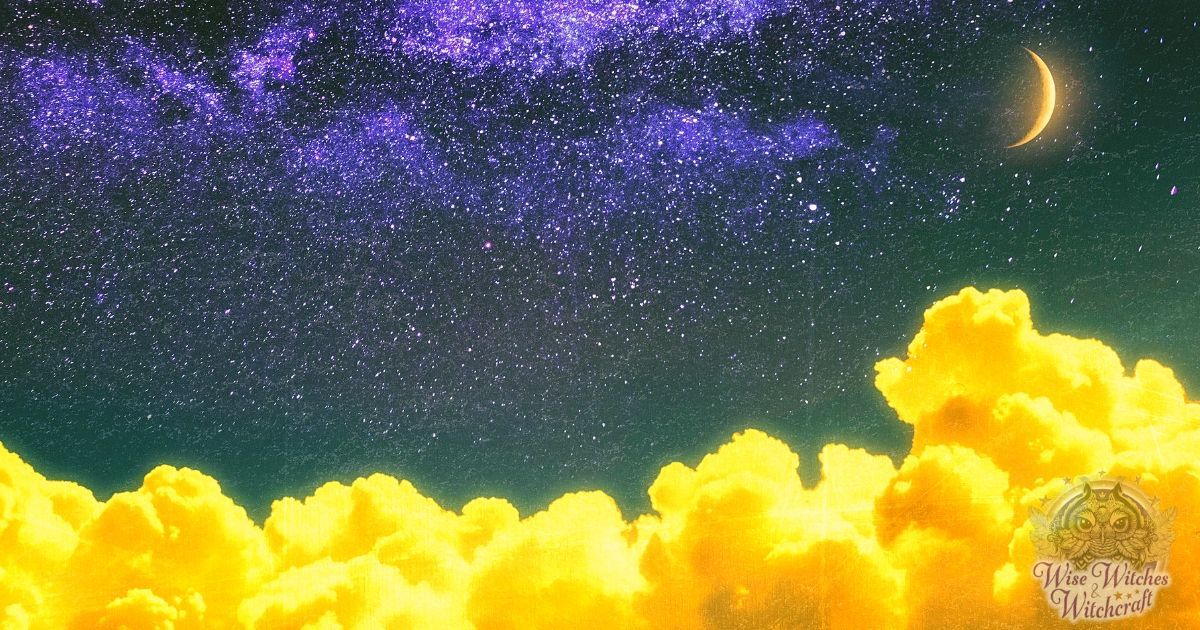
“If our titles recall the known myths of antiquity, we have used them again because they are the eternal symbols upon which we must fall back to express basic psychological ideas.”
– Mark Rothko
Many pagans align rituals and magickal operations at specific times and phases of the moon. The moon signifies Divine Feminine energies or the Goddess. It is also a symbol for all that’s mysterious or “The Mysteries.”
The moon corresponds with “otherworldly realms, ideas, and the spirit or spiritual worlds.” As a celestial body having a significant influence on water (animals and people too), the moon’s energies hold sway over the subconscious and emotions. As such, the Sun serves as a symbol of the physical world, the mundane, and scientific knowledge. Ultimately, the Moon and Sun represent revelation and enlightenment, with each celestial body signifying the opposite end of the spectrum: esoteric (hidden or occult) versus exoteric (mundane or commonplace) understandings.
Every moon phase corresponds with specific energies. Hence, a practitioner seeks to align with one of the moon phases when working magick. By aligning with the moon, witches can use the energetic influences for magical empowerment. The key term here is “empowerment,” since it’s the witch’s will, intent, and actions that are the deciding factors in magickal endeavors. As such, performing the magical arts during a specific moon phase lets the practitioner accomplish three things:
- Align with the increasing and decreasing energies of the moon as it moves through its cycle each month.
- Make the most of the celestial influences to ensure the greater likelihood of success in magickal operations.
- Achieve a specific mindset necessary for successful magickal workings.
[wisew_rectangle_large align=”right”]Just as the moon aspect symbolizes different types of energetic influences, the moon has a number of correspondences all of which “represent” or symbolize lunar forces. The correspondences include concepts, ideas, behaviors, and physical objects. Some common lunar correspondences include:
- Dreams.
- The subconscious realm.
- Primal instinct.
- Psychic senses, intuition (think “Mother’s intuition” and “gut instincts”), and extra sensory perception.
- Chakra: Ajna or the Third Eye.
- Planting and gardening.
- The ebb and flow of water (tides).
- Bodily fluids (Remember: we’re mostly made of water!
- The ebb and flow of emotion.
- Bodily functions: The pancreas, cerebellum, pineal gland, the womb, and stomach (gut).
- Concepts: femininity, the Divine Feminine, Yin forces, Feminism, conception, fertility, growth, motherhood, the menstrual cycle (sometimes called “moon cycle”).
- Properties: passive (receptive forces), cold, and moist (water-ruler and Yes, there’s water on the moon!).
Below are the common pagan symbols for the various moon phases. Information about the phase and its meaning is also present next to each moon symbol below.
Dark Moon Pagan Symbol and Meaning
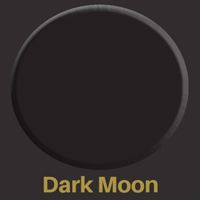 When the moon is dark, it is because of its close proximity to the Sun. The moon ends up appearing dark because it is in the path of the Sun’s shadow. This moon phase, even though it is not visible to us, rises around 6 am and sets 12 hours later at 6 pm.
When the moon is dark, it is because of its close proximity to the Sun. The moon ends up appearing dark because it is in the path of the Sun’s shadow. This moon phase, even though it is not visible to us, rises around 6 am and sets 12 hours later at 6 pm.
As a time for banishings, it’s a suitable period for cleaning your sacred space and banishing any negative energies. As this is the time aligning with the Crone aspect of the Goddess, consider calling on her wisdom or assistance when you are in need. Consider meditating on bring peace into your life or look for ways to instill more creativity in your day-to-day activities.
Consider the goals you want to accomplish within the 30 days or even the next three months. Use this time to brainstorm and to map out a plan for each one of your goals. Since you are evaluating your current position in life, you can also check the magickal supplies you have on hand. It is also a good moon phase for taking stock and for maintaining your witch’s cabinet.
[wisew_rectangle_large align=”left”]You can use the dark moon phase as a reminder to ready yourself for when the appropriate time to work magic arrives. Once a month jot down the oils, herbs, candles, and other magickal supplies you have on hand. If you need any stock added, make a list of your stock needs.
A solid black circle represents the dark moon phase. Some practitioners refrain from performing magick during the dark moon at all, feeling it is not a positive time to cast spells or work rituals. Others perform magick relating to anything they want to restrict, decrease, or banish.
Unlike the full moon where works focus on manifestation, the dark moon is a time of banishing. A dark moon phase is a time where some pagans focus on magick relating to spirit work. Others use this moon phase for empowerment when they want or need extra help with banishing bad habits or addictions. If you prefer to focus on working on inner emotional work, during dark moon is a good time to do so. Many practitioners see it as a period for self-reflection or evaluation.
Increscent Moon Pagan Symbol and Meaning
 The Increscent Moon is also the Waxing Moon and Crescent Moon. It features two points, both of which point in the same left or right direction, depending on the viewer’s perspective and location on earth. At this time, anywhere from one to 41 percent of the moon’s visible surface reflects the Sun’s light.
The Increscent Moon is also the Waxing Moon and Crescent Moon. It features two points, both of which point in the same left or right direction, depending on the viewer’s perspective and location on earth. At this time, anywhere from one to 41 percent of the moon’s visible surface reflects the Sun’s light.
From the Northern Hemisphere, the right side of the moon is visible; from the Southern Hemisphere, the left. The waxing moon rises around 9 am and sets 12 hours later at around 9 pm.
The word increscent means “increasing or growing.” It is the moon phase corresponding to fresh starts and new beginnings. A crescent moon is a perfect time for magick relating to ideas and creativity. Pagan symbols for the crescent moon are common calendar markings.
Consider this symbol representative of the beginning of the physical evolution of the body as it goes through the various life stages. If you are working with the waxing moon energies, check out the current astrological conditions as well to ensure there isn’t conflicting energies from retrograded planetary influences. For example, if you want to launch a new project or enter into a new romance, the waxing moon is perfect for empowering spellwork and intentions you set forth.
But, if the waxing moon phase occurs during a time when Mercury goes retrograde, you may be defeating your purpose. Mercury is the planet ruling all forms of communication and travel; when the planet appears to move backward, starting up anything new is not recommended. Mercury goes retrograde at least three times a year.
Note: The waxing moon phase should not be confused with the first quarter moon or waxing gibbous moon as the waxing aspect appears in the night sky before both of the latter-mentioned phases.
First Quarter Moon Pagan Symbol and Meaning
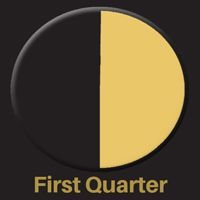 This phase appears in the sky following the waxing moon but before the waxing gibbous phase. The right half side of the moon reflects the Sun’s light. Just over 50 percent of the Moon’s surface is lit by the Sun’s light.
This phase appears in the sky following the waxing moon but before the waxing gibbous phase. The right half side of the moon reflects the Sun’s light. Just over 50 percent of the Moon’s surface is lit by the Sun’s light.
The first quarter moon rises at Midday and sets 12 hours later at Midnight. When viewing this aspect, it appears as if the moon’s surface is nearly half illuminated, with one side dark and one side light.
Since the first quarter aspect falls between the waxing and full moon, it is the perfect symbol for transitions and change of all kinds. The moon continues to grow with power as it moves closer to being full.
Consider performing magickal operations for instigating significant change in your life. If you’re looking to see an increase in abundance or you want to grow more spiritually, the first quarter moon can help you manifest your desires. Now is a good time to invite positive energies into your reality.
If you performed any spells during the waxing moon phase, when the moon reaches the first quarter, you might want to document whether you see any success from your previous magickal work yet. The various moon phases can serve as a reminder to track your successes as well as failures. It will help you learn what operations work and those that don’t.
Waxing Gibbous Moon Pagan Symbol and Meaning
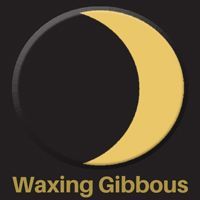 This is the second of two moon phases between waxing and full. The Waxing Gibbous Moon is the phase nearest to full. This is when the moon’s surface reflects the Sun from anywhere between 51 and 99 percent of its visible surface. The Waxing Gibbous rises around 3 pm and sets 12 hours later at 3 am. Look at this moon aspect as marking the time that’s “quickening.”
This is the second of two moon phases between waxing and full. The Waxing Gibbous Moon is the phase nearest to full. This is when the moon’s surface reflects the Sun from anywhere between 51 and 99 percent of its visible surface. The Waxing Gibbous rises around 3 pm and sets 12 hours later at 3 am. Look at this moon aspect as marking the time that’s “quickening.”
Consider this moon aspect as a time when the waxing moon energies have an extra strong influence (positive energies with a little extra “wallop” or “oomph!”. When working in this moon phase consider projects that are about to reach their height. It is also an ideal time to deal with anything you plan on completing before the moon is full. Magickal workings can align with drawing on the moon’s growing power to give you that extra push over any hurdles or obstacles you might face.
[wisew_rectangle_large align=”right”]As you attune yourself to the cycles of the moon, you’ll begin to sense when the waxing gibbous moon will appear; you might “feel more vitalized and alive” now, and your stamina may also increase. If you’re looking to expand your mind (as pagans are so often hungry for mundane and spiritual knowledge), the “growing light” of the waxing gibbous moon comes to represent a time of “increased enlightenment.” Both new witches and adept practitioners might plan special study sessions during the waxing gibbous phase since understanding the information, and the assimilation of knowledge is easier now.
It won’t be long before the moon is full. Do you want to cast a spell that’ll produce a fast result? This period is spectacular for performing magick to stimulate your and imagination. If you’ve been in a slump lately and feeling stuck or thwarted in creative projects, you find during this time you’re more in touch with your creative muse. Use the waxing gibbous moon to do just that!
Full Moon Pagan Symbols and What They Mean
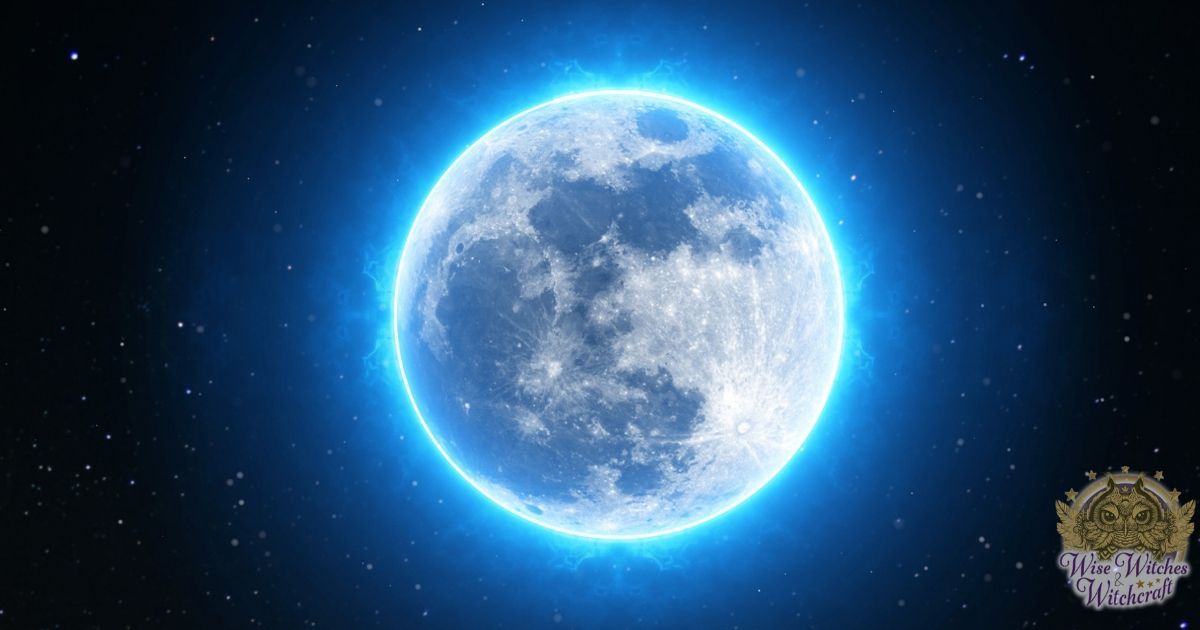
Full Moon Pagan Symbol and Meaning
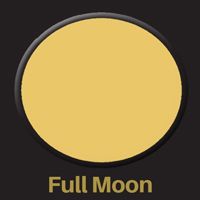 It is one of the most common pagan symbols in existence. A simple circle represents the full moon. The full moon is the phase midway between the waxing (increscent) and waning (decrescent) moon phases. For means of shorthand when writing spells, the circle can also represent the instruction for constructing the magick circle. This is the time when magick empowerment reaches a peak. All types of magickal workings are suitable during this time. The full moon phase corresponds to works of manifestation. This aspect, unlike the dark moon phase, relates to working within the physical plane. At this time, the entire visible surface of the moon reflects sunlight.
It is one of the most common pagan symbols in existence. A simple circle represents the full moon. The full moon is the phase midway between the waxing (increscent) and waning (decrescent) moon phases. For means of shorthand when writing spells, the circle can also represent the instruction for constructing the magick circle. This is the time when magick empowerment reaches a peak. All types of magickal workings are suitable during this time. The full moon phase corresponds to works of manifestation. This aspect, unlike the dark moon phase, relates to working within the physical plane. At this time, the entire visible surface of the moon reflects sunlight.
The full moon is the phase between the waxing gibbous and waning gibbous moon phases. It is one of the most common pagan symbols. It is also the most visible moon phase. When the moon is full, the entire disc illuminates from sunset until sunrise. It usually rises around 6 pm and sets 12 hours later at 6 am.
A simple circle represents the full moon. This is the time when magick empowerment reaches a peak.
Hint: (For means of shorthand when writing spells, the circle can also represent the instruction for constructing the magick circle).
[wisew_rectangle_large align=”left”]The Moon is a symbol representing the Goddess throughout many cultures. But, it also corresponds to male deities too. Moon Goddesses include Selene, Luna, Diana, Artemis, Nephthys, Ix’Chel, Hecate, and Aradia, among others. Moon Gods include Sin, Thoth, Hors, Chandra, and Igaluk, among others.
All types of magickal workings are suitable during this time. When the moon is at its zenith in terms of energetic influence, practitioners use the time for:
- Inner reflection and meditation.
- Manifesting their will (Alignment of thoughts with specific actions or magickal operations to effect change in the physical world).
- Performing rites of passage: Wiccanings, Familiar Blessings, Dedications, Initiations, Handfastings, Crossings, and Sabbats (when timing is appropriate).
- Full moon Esbats (A time for drawing down lunar energies and performing magickal operations). Some teaching covens hold “classes” at this time.
- Performing psychic exercises to sharpen extrasensory skills.
- Spellcasting for healing, abundance, growth, prosperity, happiness, success, banishings, etc.
- The full moon phase corresponds to works of manifestation. Unlike the dark moon phase, a full moon relates to working within the physical plane. Now is a fantastic time for healing work of all kinds, spiritual pursuits, protection magic, and divination. Working with crystals and performing psychic exercises are suitable pursuits for this time. Many pagans celebrate Esbat on the full moon as a way of remembering one’s connection to the Divine and honoring that connection.
Blue Moon Pagan Symbol and Meaning
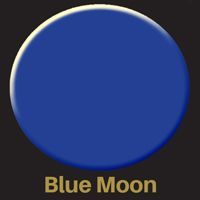 If the full moon icon has a blue color for filler, it can serve as a representation of the blue moon. There are different means for determining when a blue moon will occur. Since there is no specific symbol for this moon phase, you can use the circle with the letter “B” to separate it from the traditional full moon when you are taking notes, writing spells, or jotting things down in your Book of Shadows (Grimoire). The blue moon phase is less frequent than the month-to-month appearance of the new, waxing, full, and waning phases.
If the full moon icon has a blue color for filler, it can serve as a representation of the blue moon. There are different means for determining when a blue moon will occur. Since there is no specific symbol for this moon phase, you can use the circle with the letter “B” to separate it from the traditional full moon when you are taking notes, writing spells, or jotting things down in your Book of Shadows (Grimoire). The blue moon phase is less frequent than the month-to-month appearance of the new, waxing, full, and waning phases.
Sometimes the blue moon is the thirteenth moon in a year’s cycle. In other instances, there is more than one blue moon within the stretch of a season. Thus, an extra full moon occurs between solstices or equinoxes. However, the more modern understanding of this phase differs.
A print error in a 1946 issue of “Sky & Telescope Magazine,” identifies the full blue moon as the second appearance of a full moon in one month’s time. The only month the blue moon does not occur when using such a formula is the month of February.
The rarity of the moon phase is the origin of the cliché “Once in a blue moon.” Due to the special timing of this moon phase, some practitioners believe the power of the moon phase doubles when it appears.
Special works, spells, and blessings are ideal for when the sky presents the moon in its blue moon phase. It’s a good idea to research when the upcoming blue moon appears in the sky. It will allow you to plan accordingly so you’ll be ready to perform magickal operations you feel require the extra power stemming from the rarity of this moon’s aspect occurrence.
Super Full Moon Pagan Symbol and Meaning
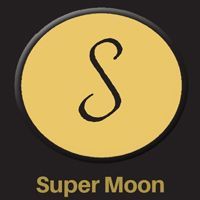 The empty circle can also represent a supermoon phase, which has no symbol of its own. Adding an “S” inside the moon symbol can help separate the notation of a regular full moon and Super Moon phase.
The empty circle can also represent a supermoon phase, which has no symbol of its own. Adding an “S” inside the moon symbol can help separate the notation of a regular full moon and Super Moon phase.
The supermoon is a phase where the moon seems extra-large in the sky. Its excessive size is due to its proximity to the earth, its light is at its brightest.
Since the moon rules the waters and controls the motion of the tides, water magick, scrying, and spells involving the element of water are perfect for this time. This is also an excellent time for Drawing Down Moon energies for empowering one’s magick or for healing.
The supermoon is also an excellent time to cleanse and charge your magickal tools that are empowered by lunar energies. You can recharge crystals by letting them sit on a windowsill to take in the energies from the moonlight falling upon them.
It’s also a good time for charging crystal balls. Since the moon rules the subconscious, it’s a perfect time for cleansing and recharging tarot decks, pendulums, and other divination tools.
Waning Moon Pagan Symbols
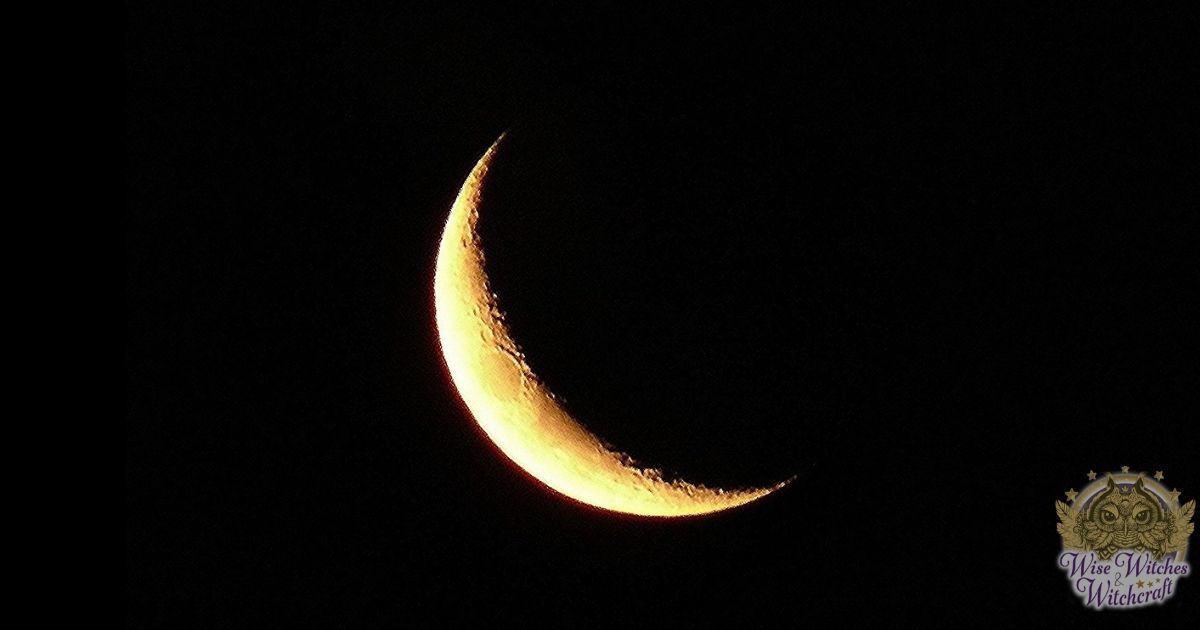
Waning Gibbous Moon Pagan Symbol and Meaning
 This is the moon phase between waxing and full. When the waxing gibbous moon appears, and you view it from a location in the Northern hemisphere, the light appears as if it is diminishing or “waning.” Now the left side of the is reflecting the sun’s light over 99 to 51 percent of the moon’s visible surface (Right side in the Southern hemisphere).
This is the moon phase between waxing and full. When the waxing gibbous moon appears, and you view it from a location in the Northern hemisphere, the light appears as if it is diminishing or “waning.” Now the left side of the is reflecting the sun’s light over 99 to 51 percent of the moon’s visible surface (Right side in the Southern hemisphere).
This moon phase is visible for the majority of the evening as well as in the wee hours of the morning. It rises around 9 pm and sets 12 hours later at 9 am. Like the waxing gibbous, the waning gibbous has a higher degree of energetic influence than the third quarter or waning crescent.
Waning moons correspond to endings, and for the removal of any obstacles, you might be experiencing in your life. Protection magick, banishings, clearings, and anything you want to lessen in severity or consequence are issues practitioners address during the waning gibbous phase. Since it is a gibbous aspect, you can anticipate “speedier” conclusions or closure when you work magick during this time.
Third Quarter Moon Pagan Symbol and Meaning
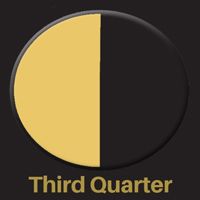 This is when the moon is half full on its left side. It occurs following the waning gibbous phase. Since this is a transitional period between the waning gibbous and waning phase, it’s a perfect phase for dealing with transitions. Such transitions are of a personal nature or the changes occurring in a project, relationship, or situation.
This is when the moon is half full on its left side. It occurs following the waning gibbous phase. Since this is a transitional period between the waning gibbous and waning phase, it’s a perfect phase for dealing with transitions. Such transitions are of a personal nature or the changes occurring in a project, relationship, or situation.
The third quarter moon is also the last quarter. When viewing the moon from the Northern Hemisphere, about 50 percent of the moon’s visible surface illuminates on the left side. The last quarter moon rises at midnight and sets right around midday. Sometimes it is visible early morning hours.
Like the waning crescent moon, appropriate magickal workings involving anything to do with endings. If you are involved in an existing conflict, spells can have a focus on conflict resolution, peace, and harmony.
If you have habits you want to cease, the third quarter moon is good for spells that will help you break free from the powerful hold of habitual behavior. Since healing is an act resulting in the cessation of illness, you can still perform healing spells and energetic healing sessions during waning moon phases with considerable success.
Decrescent Moon Pagan Symbol and Meaning
 This moon phase follows the third quarter moon. Now one to 49 percent of the moon’s surface appears illuminated when viewing it from the Northern hemisphere. The waning crescent moon rises at 3 am and sets 12 hours later at 3 pm. It’s visible in the sky just before sunrise and into the early portion of the afternoon.
This moon phase follows the third quarter moon. Now one to 49 percent of the moon’s surface appears illuminated when viewing it from the Northern hemisphere. The waning crescent moon rises at 3 am and sets 12 hours later at 3 pm. It’s visible in the sky just before sunrise and into the early portion of the afternoon.
Waning means to “decrease,” or “reduce.” It is a time for conducting magickal workings relating endings, releasing, or reversing baneful conditions.
Consider this symbol representative of the decreasing focus on the physical plane. When the moon is waning, there is more focus on internal work, meditation, contemplation, and study. The waning moon signifies increasing attentiveness to spiritual pursuits and psychic awareness. It can also signify the left-handed path when pursuing one’s spirituality.
What Are Pagan Symbols for the Sun?

Pagans follow a nature-based religious system. Many pagans, including Wiccans, attune to the cycles of the planet and nature. The cycles of the moon mark times in which Wiccans celebrate Esbats. The major sabbat holidays are solar celebrations. Thus, throughout the year, Wiccans honor the Sun and Moon as representative of the God and Goddess.
The holidays are times of honoring the divine and giving thanks for one’s blessings. It is also time for self-reflection or evaluation. Esbats are month-to-month celebrations, festivities, and learning. Just as there are many symbols for the moon, multiple pagan symbols represent the Sun and its power.
It is the power of the Sun that aligns with the masculine aspect of the Divine in many nature-based Pagan belief systems. The story of the Holly and Oak King are archetypes serving as symbols for the waxing and waning sunlight during the year. Each hold rulership over half the year, symbolizing the balance between dark and light.
Since we rely on the Sun for survival, it is a pagan symbol representing power. It appears in ancient and modern symbolism around the world. For instance, the Sun featuring wings is a common symbol for the star in ancient cultures. It suggests its movement across the sky. The height of the Sun is something the ancients align with the ability to see or know all things.
When the Sun rises and sets each day, it is easy to associate the star with the notion of reincarnation, rebirth, and rejuvenation. This rising and setting of the star also link the Sun to the concept of birth and death. When we are born we entire into the light, when we die, we merge with the shadows.
[wisew_rectangle_large align=”right”]The winged Sun symbol stems from the ancient Near East. People in Persia, Anatolia, Mesopotamia, and Egypt considered the Sun a symbol of the Divine. Similar symbolism originates from Australia and South America. The divine connotation then made the symbol one corresponding with power and royalty.
Other popular Sun symbols include wheels. The Pagan Wheel of the Year features eight spokes. Each spoke signifies one of the Major or Lesser Sabbats some Pagans celebrate. The sabbats are holidays aligning with specific seasonal changes and the Sun’s movement. Each spoke of the wheel also signifies the Sun’s rays. Now let’s examine a few more of the Sun’s common depictions.
Like the Moon, the Sun has a number of correspondences signifying or representing Sun energies. The Sun is a symbol also corresponding to specific concepts and ideas. As a symbol, the Sun signifies:
- Life, vitality, stamina, endurance, growth, resurrection, and expansion.
- Generosity, happiness, blessings, kindness, and compassionate (warmth).
- Enlightenment, revelation, epiphanies, inspiration, and insights.
- Consciousness (versus the Moon’s relation to the subconscious).
- Bodily processes: circulation, the heart, and general well-being.
- Masculinity, the God or Masculine Divine, the consort of the Goddess (Sun and Moon imagery together.
- Chakra: Anahata (The Heart).
- While the moon corresponds with water, the Sun’s element is fire.
- Yang energies, projective, assertive, action-oriented.
- Sun deities are often male and include Apollo, Christ, Mithras, Ra, Helios; Goddesses include Ekhi, Marici, Shapash, Epona, Bast, Sekhmet, Albina, Aurora, and Eos, among others.

Pagan Sun Symbols
“I’m not mainly interested in what buildings mean as symbols or vehicles for ideas.”
– Peter Zumthor
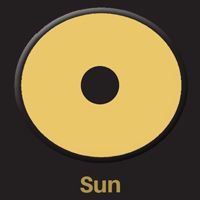 The symbol of the Sun consists of a circle with a single point in the middle. It represents the Sun as the center of our solar system or a Sun-centric system. The circle represents everything in the solar system as it moves around the Sun. The symbol is useful when referencing spell work requiring solar energies or when focusing on solar deities. If a ritual requires the invocation of a solar deity, this symbol serves well as a notion in your grimoire.
The symbol of the Sun consists of a circle with a single point in the middle. It represents the Sun as the center of our solar system or a Sun-centric system. The circle represents everything in the solar system as it moves around the Sun. The symbol is useful when referencing spell work requiring solar energies or when focusing on solar deities. If a ritual requires the invocation of a solar deity, this symbol serves well as a notion in your grimoire.
In Jung psychology, the same symbol represents the self and id. The dot in the center of the circle represents the id alone. The circle and the dot represent the entire self. Meanwhile, the circle with a dot in the center also signifies the element AU or Gold. Of special note is the fact that this specific Sun symbol is a common alchemical icon. It is a lot like the Nazar or evil eye icon and can substitute as such.
If you look at the Sun symbol here, you can also easily imagine it being an eye. The center dot is the “pupil.” The eye may stem from Egyptian references to the eye of Ra (Sun God). A single eye is a symbol in common use as the “All Seeing Eye of God.” Now let’s examine a few more symbols representing solar influences.
Owia Kokroko Pagan Symbol and Meaning
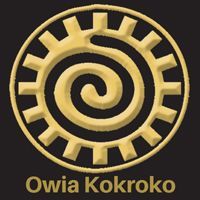 The Owia Kokroko is a Native American representation of the Sun as it moves through the sky. The design of the symbol is a mix of curved and straight lines, all of which created a spiral within a closed circle. The symbol’s structure features an asymmetrical style and is absent of crossing lines.
The Owia Kokroko is a Native American representation of the Sun as it moves through the sky. The design of the symbol is a mix of curved and straight lines, all of which created a spiral within a closed circle. The symbol’s structure features an asymmetrical style and is absent of crossing lines.
The Owia Kokroko symbol represents the Sun’s greatness. It is an icon representing the life-giving energies and strength. It signifies restoration and revitalization. Owia Kokroko originates from West Africa.
The simple symbol stems from the Gyaman in Cote d’Ivoire and Ashanti in Ghana. The symbol is unique as often spirals correspond with goddess energies. Here, however, the spiral is an apparent reference to masculine solar energies.
Eoh Pagan Symbol and Meaning
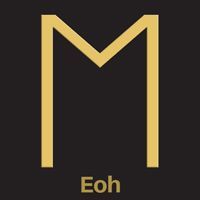 This symbol stems from a runic alphabet. Eoh is part of the Proto-Norse Runic system. The shape is open and consists of straight and crossing lines forming symmetrical design. “Eoh” has more than one meaning. While it means movement and horse, it also means “path of the Sun.”
This symbol stems from a runic alphabet. Eoh is part of the Proto-Norse Runic system. The shape is open and consists of straight and crossing lines forming symmetrical design. “Eoh” has more than one meaning. While it means movement and horse, it also means “path of the Sun.”
The symbol is easy to remember if you think of the myth of Aurora, the Goddess of the Dawn. The story of Helios, the God of the Sun also makes the icon memorable. Just think of horse-drawn chariots dragging behind it in the sky, the Sun as it moves across the horizon! Meanwhile, is the Eos or Aurora (Goddess of the Dawn) who opens the gates to allow the Helios’ horse-drawn chariot release into the sky, bringing with him the dawning of a new day.
Seal of Shamash Pagan Symbol and Meaning
 This icon represents an ancient Babylonian deity. Shamash is a solar god. Since he can see all things, he also is a god governing Justice. Shamash’s light corresponds with knowledge and psychic awareness.
This icon represents an ancient Babylonian deity. Shamash is a solar god. Since he can see all things, he also is a god governing Justice. Shamash’s light corresponds with knowledge and psychic awareness.
This seal consists of a star-like design within a circle. The symbol is more than 3000 years old. It stems from ancient Mesopotamian cultures. The image is common on cylinder seals, jewelry, and many ancient artifacts originating from the region.
The interior design of the star features four points representing the four Airts or cardinal points. It looks much like a modern-day compass. The symbol connotes the Sun’s power and its rulership over the entire planet.
As a popular solar and religious symbol, The Seal of Shamash appears on ancient pieces of jewelry, personal object, and cylinder seals. “The Tablet of Shamash” features the star symbol.
The Seal of Shamash design features straight, curvy, and crossing lines laid out in an asymmetrical pattern.
The image represents a solar disc with the emanating rays reaching out in all directions. There are four larger rays which align with the cardinal points; it represents the Sun’s power and how all of life and everything on earth is dependent on the Sun’s light.
Awen Pagan Symbols and Meaning
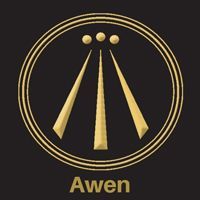 The Awen symbol is also “The Triad of Sunrises.” The symbol features three dots with three vertical lines appearing to emanate from each dot. The dots represent the triple aspect of the divine. Also, the dots represent the precise point where the sun rises on solstices and equinoxes. The designs rest inside three circles signifying “the three circles of creation.”
The Awen symbol is also “The Triad of Sunrises.” The symbol features three dots with three vertical lines appearing to emanate from each dot. The dots represent the triple aspect of the divine. Also, the dots represent the precise point where the sun rises on solstices and equinoxes. The designs rest inside three circles signifying “the three circles of creation.”
The symbol stems from Neo-Druidic beliefs. Since there are many Neo-Druidic organizations, the meaning of the Awen symbol varies. Some align the three rays with “air, earth, and sea.” Others align the rays with “love, truth, and wisdom.” Still, others assume the lines signify “mind, body, and spirit.”
It’s clear that a cultural lens and personal understandings shape the meaning of Sun symbols. It’s also clear Sun symbols are pervasive as they stem from cultures all over the world.
While there are some differences in design and minor variations in meanings for Sun symbols, there’s some consistency in symbol definition. The Sun is vital for life to exist. Thus, symbols convey its power, rulership, and its role in seasonal changes as well as the passage of time.
Scarab Pagan Symbol and Meaning
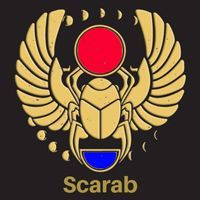 The scarab is a sun symbol originating from ancient Egypt. The symbol of the scarab appears with long outstretched wings and a solar disc in some instances. In others, the scarab appears to look like a regular insect. The Egyptians painted the scarab on tomb walls, in other works of art, and incorporated the imagery into beautiful jewelry and objects.
The scarab is a sun symbol originating from ancient Egypt. The symbol of the scarab appears with long outstretched wings and a solar disc in some instances. In others, the scarab appears to look like a regular insect. The Egyptians painted the scarab on tomb walls, in other works of art, and incorporated the imagery into beautiful jewelry and objects.
How did this innovative little bug come to be associated with something as majestic as the Sun itself? Beetles roll a ball of dung around in front of them to create a place to put their eggs. The beetle relies on the Sun for help when navigating the ball to where they want to have their young. This movement in the direction of the Sun had the ancient Egyptians draw associations between the beetle and the Sun.
The dung beetle is an ideal icon for representing divinity, because at night, when the sun sets, it then uses the Moon as a navigation tool. Since the beetle’s young rise up out of the dung when born, the insect becomes a symbol of the Sun’s nurturing, life-giving, and life supporting energies.
Pagan Symbols for the Gods and Goddesses

With so many pagan perspectives of the Divine, there are thousands of aspects belonging to the God and Goddess. Thus, there are thousands of symbols signifying the various Divine aspects Pagans call upon when working with patron deities. All the symbols for the Moon can stand as a symbol for lunar goddesses. But, since the Moon is a feminine symbol, it can represent any goddess aspect someone associates with the icon.
The most common depiction of the goddess as a symbol is the waxing, full, and waning moon combination. Each phase aligns with a feminine aspect or a stage of womanhood. Additional symbols for the goddess include spirals, Venus of Willendorf figures, and the Triquetra (see above). The New or Dark Moon phase aligns with the Dark Goddess. Other symbols representing the feminine aspect of the Divine include:
Tanit Pagan Symbol and Meaning
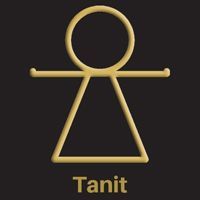
The symbol for Tanit reveals an icon set to signify a specific goddess. A Phoenician and Punic deity, Tanit is also Tank or Tinnit. She is a goddess aspect stemming from ancient Carthage.
A lunar goddess, she is analogous to other Moon deities like Selene, Luna, and Astarte. The Romans introduce Tanit into their pantheon as well. In ancient Rome, Tanit is Caelestis, Juno Caelestis, or Dea Caelestis. The term “Caelestis” means “Heavenly or of the Sky.”
The symbol for Tanit sometimes features a crescent moon above her head. The moon’s points face downward. The lunar body hovers above Her head in a horizontal position. The design is suggestive of lunar energies raining down upon the earth. It might also signify abundance as Tanit is a goddess of fertility and war. Ancient steles reveal an image of Tanit like the symbol above.
Labrys Pagan Symbol and Meaning
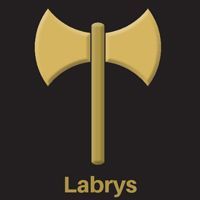 The double-headed ax or Labrys is a symbol relating to Hellenic Polytheistic Reconstructionism. The symbol represents the goddess movement as a symbol standing for ancient cultures existing before patriarchal societies became prominent. This symbol can double as a representation of the masculine divine as well. As one example, the labrys belongs to Zeus Labraundos, the storm god in Labraunda of Caria.
The double-headed ax or Labrys is a symbol relating to Hellenic Polytheistic Reconstructionism. The symbol represents the goddess movement as a symbol standing for ancient cultures existing before patriarchal societies became prominent. This symbol can double as a representation of the masculine divine as well. As one example, the labrys belongs to Zeus Labraundos, the storm god in Labraunda of Caria.
The labrys is a ritual ax similar to those found in ancient Minoan cultures. The ax signifies the Mother aspect of the goddess. There’s a connection between the “labrys” and the “labrynth,” (modern spelling is labyrinth) both of which have etymological roots in the word “labus” meaning “lips.” The modern use of the symbol is one signifying lesbian solidarity.
Triple Goddess Pagan Symbol and Meaning
Hecate’s Wheel
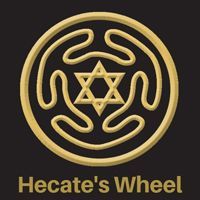 Hecate’s Wheel or the Strophalos of Hekate is a symbol referencing the goddess; More specifically, it refers to Diana Lucifera, otherwise known as Hecate. She is a moon goddess and one who rules over crossroads. In the Chaldean Oracle, a body of Alexandrian text originating in the second century, the Wheel of Hecate is described as a symbol relating to rebirth. The writings reference the wheel as a “labyrinthine serpent” encircling a “whirling” spirals serving as a representation of what emanates from the mind of the Divine. Followers of Dianic Wicca and Hellenic Recon use the Wheel of Hecate as a symbol expressing their beliefs.
Hecate’s Wheel or the Strophalos of Hekate is a symbol referencing the goddess; More specifically, it refers to Diana Lucifera, otherwise known as Hecate. She is a moon goddess and one who rules over crossroads. In the Chaldean Oracle, a body of Alexandrian text originating in the second century, the Wheel of Hecate is described as a symbol relating to rebirth. The writings reference the wheel as a “labyrinthine serpent” encircling a “whirling” spirals serving as a representation of what emanates from the mind of the Divine. Followers of Dianic Wicca and Hellenic Recon use the Wheel of Hecate as a symbol expressing their beliefs.
Spiral Pagan Symbol and Meaning
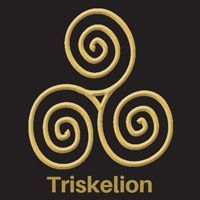 Spirals are symbols with many meanings, one of which is a solar representation. The same symbol connects the depiction of the double helix or deoxyribonucleic acid (DNA), so it serves as a symbol of the code for life and creation. The spiral often occurs in nature too, so it is a symbol representing the World Pantheist Movement. Some pagans associate spiral symbolism with the path one walks in life. Often times, a figure of a woman featuring a spiral in the area of the womb represents the Feminine aspect of the Divine. Three spirals linked together in a triquetra-like knot is a triskelion: Also representative of the three aspects of the Divine Feminine. Additional representations corresponding with spirals include:
Spirals are symbols with many meanings, one of which is a solar representation. The same symbol connects the depiction of the double helix or deoxyribonucleic acid (DNA), so it serves as a symbol of the code for life and creation. The spiral often occurs in nature too, so it is a symbol representing the World Pantheist Movement. Some pagans associate spiral symbolism with the path one walks in life. Often times, a figure of a woman featuring a spiral in the area of the womb represents the Feminine aspect of the Divine. Three spirals linked together in a triquetra-like knot is a triskelion: Also representative of the three aspects of the Divine Feminine. Additional representations corresponding with spirals include:
- Birth and creation (the spiral is sometimes on drawings of the goddess with its position over the goddess’ womb).
- The path inward starting from external consciousness
- The shift from the mundane or physical plane to the spiritual and inner realms
- Universal awareness
- The spiritual journey to enlightenment
- Growth and expansion
- Projection of power
- The ever-turning Pagan Wheel of the Year
- The icon of continuous changes instead of stagnation (therefore, representing life).
- Dance during ritual or the practice of circumambulation
Circumambulation involves the intentional movement around a fire or sacred object. The practice involves practitioners mimicking the movement of the Sun. The dancing or motion is for honoring the deity the idol represents in the center of the circle. It also creates energy.
The type of energy the movement generates depends on the direction of the circle. Movement clockwise is Deosil movement. Movement counterclockwise is Widdershins.
Spiral Goddess Pagan Symbol and Meaning
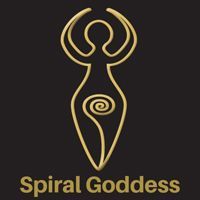 Sometimes the Spiral Goddess is depicted as the figure of a woman. The spiral represents the womb of the goddess. Connecting the image to the womb allows for the symbol to express fertility and the source of all She creates. It signifies the sacredness of the Feminine Divine and the magick associated with the female form. The figure is often voluptuous and full, signifying fertility and abundance.
Sometimes the Spiral Goddess is depicted as the figure of a woman. The spiral represents the womb of the goddess. Connecting the image to the womb allows for the symbol to express fertility and the source of all She creates. It signifies the sacredness of the Feminine Divine and the magick associated with the female form. The figure is often voluptuous and full, signifying fertility and abundance.
Bull of Cow Pagan Symbol and Meaning
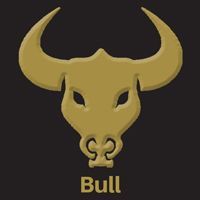 In Druidic practices, the Bull aligns with god Esus. When the Druids created monuments in honor of Esus, the inscription often featured the words “Tarvos Trigaranus,” is a Latin phrase meaning, “A bull with three cranes.” In ancient Celtic cultures, the Bull is a symbol of status, wealth, abundance, and fertility. The Celts linked the bull to kinship, ancestry, and the land.
In Druidic practices, the Bull aligns with god Esus. When the Druids created monuments in honor of Esus, the inscription often featured the words “Tarvos Trigaranus,” is a Latin phrase meaning, “A bull with three cranes.” In ancient Celtic cultures, the Bull is a symbol of status, wealth, abundance, and fertility. The Celts linked the bull to kinship, ancestry, and the land.
People in ancient Crete would leap bulls during rituals. The bull is also part of many Egyptian rites. The animal is the source for the imagining of the minotaur due to the horns on its head. The same horns are seen as with a solar disc resting between them: A symbol of the ancient goddesses Isis and Hathor from the Egyptian pantheon.
Similar to the cow which those in India and other cultures hold sacred, the Bull serves as a source of prosperity and nourishment for the community. When not creating life and increasing cattle size, the bull can also serve as a food source. The bull symbol can double as the sign for Taurus. It can also signify conditions requiring strength, endurance, or a steadfast resolve.
Horned God Pagan Symbol and Meaning
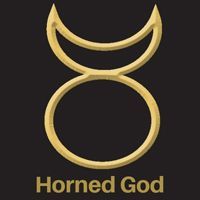 The horned God symbol looks like the Sun or Moon with a crescent moon on its side which creates the appearance of horns. Indeed, the symbol is practitioners sometimes call the symbol the “Horned Moon: This reference actually makes the icon one referencing the Lunar Goddess and Huntress, Diana. When using the symbol to refer to the Masculine Divine, it references the Celtic deity Cernunnos, Ammon from the Egyptian pantheon, or the God Pan from ancient Greece. The icon is one symbolizing gods of the hunt and vegetation.
The horned God symbol looks like the Sun or Moon with a crescent moon on its side which creates the appearance of horns. Indeed, the symbol is practitioners sometimes call the symbol the “Horned Moon: This reference actually makes the icon one referencing the Lunar Goddess and Huntress, Diana. When using the symbol to refer to the Masculine Divine, it references the Celtic deity Cernunnos, Ammon from the Egyptian pantheon, or the God Pan from ancient Greece. The icon is one symbolizing gods of the hunt and vegetation.
Greenman Pagan Symbol and Meaning
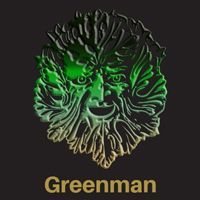 Among some of the most beautiful pagan symbols are the various images of the Green Man. This symbol appears in sculptures and on buildings all over the world. The simple description of a Green Man symbol is a male face featuring leaves all over it. It’s not hard to look outdoors during the spring, summer, and autumn months to “see” the Green Man image appear in nature itself!
Among some of the most beautiful pagan symbols are the various images of the Green Man. This symbol appears in sculptures and on buildings all over the world. The simple description of a Green Man symbol is a male face featuring leaves all over it. It’s not hard to look outdoors during the spring, summer, and autumn months to “see” the Green Man image appear in nature itself!
The Green Man design features leaves that are usually green. But, there are some images of the Green Man in gorgeous autumnal hues too. Vines and branches grow out of the nostrils and mouth of the Green Man. The remainder of the faces bears leaves, fruit, or flowers.
Look to old buildings and its likely to see one or two Green Man images craved into marble and stone. The imagery is on ecclesiastical and secular structures. The god aligns with vegetative and agricultural gods. The Green Man is the Lord of the Woodlands. He corresponds with the deity Tammuz who conquers both winter and death. There is at least one ancient Celtic god whose name means “Green Man.” The god is Viridios. He signifies:
- Fertility
- Rebirth
- Life
- Abundance
- Growth
- The Woodlands
- The Wilderness
- The Wild and Untamed
There are three common depictions of the Green Man. The first is the “Bloodsucker Head,” which sounds a lot scarier than it is in real life! They Bloodsucker Head is a Green Man’s face with vegetation growing out of every orifice. The imagery makes him like the Cornucopia as he is overflowing with abundance from the harvest. The vegetation appears to grow out of his mouth, nostrils, and tear ducts. The eyes are often carved or left as vacant holes, depending on the sculpture and artist.
The second type of Green Man imagery one will discover is the Disgorging Head. Here, the Green Man is letting abundant vegetation poor forth from his wide-open mouth. The third common image of the Green Man is the most popular: The Foliate Head. The face of the Green Man in this depiction is leaf-covered. The leaves might be fresh and green or bursting with autumnal colors. The Green Man depiction has a close link to gods like Dionysus, Odin, Osiris, and the Oak King.
Stag Horns Pagan Symbol and Meaning
 The stag aligns with the Green Man and Lord of the Woodland representations. Thus, stag horns are a symbol signifying the Divine Masculine, fertility, strength, and power. The majestic nature of the stag is, in part, the reason for the stag/god association in symbolism. The antlers of a stag convey power and dominance. Because the horns extend into the air, the horns signify hidden wisdom and the higher consciousness. It also symbolizes a connection between the self and the Cosmos.
The stag aligns with the Green Man and Lord of the Woodland representations. Thus, stag horns are a symbol signifying the Divine Masculine, fertility, strength, and power. The majestic nature of the stag is, in part, the reason for the stag/god association in symbolism. The antlers of a stag convey power and dominance. Because the horns extend into the air, the horns signify hidden wisdom and the higher consciousness. It also symbolizes a connection between the self and the Cosmos.
The size of a stag’s rack parallels the animal’s virility and strength. Hunters desire large racks with many points. Why? The hunt and what the hunter returns home with as an emblem of his successful hunting adventure. It is proof of his exceptional hunting skills but also reveals his ability to provide for his family.
[wisew_rectangle align=”left”]The stag’s antlers serve as a source of protection for the creature. Thus, the emblem of stag horns signifies the protective nature of the deity. The horns are a force to reckon with when stags go into battle. The stag’s antlers form in the spring, so they serve as a symbol of birth and renewal. The same horns fall off in the fall season, signifying hibernation, introspection, and death. Thus, the antlers are a natural symbol of life cycles.
Some depictions of the stag feature a solar disc or full sun formation resting in the stag’s horns. This is the solar stag, signifying the Divine Masculine Pagan God. The imagery combines physical strength with intellectual and spiritual strength.
More Common Pagan Symbols and Their Meanings
Many of the symbols pagans use represent concepts related to nature-based systems of belief, and esoteric understandings. Some symbols are thought to have protective powers. Others are correspondences or symbols that serve as triggers for establishing a specific state of mind. Still other icons are an expression of a practitioner’s intent or an affirmation of one’s principles.
Pentacle Pagan Symbol and Meaning
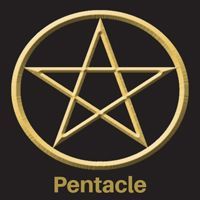 The pentacle is a symbol used in magickal operations and incorporated into jewelry and tools or other implements. It consists of a circle with a star made on an unbroken line. Many practitioners wear a pentacle as a symbol of their faith and as a form of magickal protection. The pentacle corresponds with the element of Earth. Often times, practitioners have a large pentacle or a disc with a pentacle craved on it which is placed upon the altar for use in rituals and spellcraft.
The pentacle is a symbol used in magickal operations and incorporated into jewelry and tools or other implements. It consists of a circle with a star made on an unbroken line. Many practitioners wear a pentacle as a symbol of their faith and as a form of magickal protection. The pentacle corresponds with the element of Earth. Often times, practitioners have a large pentacle or a disc with a pentacle craved on it which is placed upon the altar for use in rituals and spellcraft.
The pentacle symbolizes many concepts and beliefs. Each point corresponds with the elements and cardinal points. The four stages of the day: sunrise, noon, dusk, and sunset align with the East, South, West, and Northern directions. It is a symbol with different meanings, some of which are assigned to an upright position and others assigned to the inverted position. As a widely used symbol, much of the meaning associated with the pentacle is misconstrued by those outside of esoteric circles.
For more information about the upright and inverted pentacle and how the meaning of the symbol evolved throughout the history of the symbol’s use, check out the article “Wiccan Symbols – The Ultimate Guide,” here on Wise Witches and Witchcraft!
Hamsa Pagan Symbol and Meaning
 The hamsa (alternative spelling of khamsa or khomsah), is also known as “The Hand of Fatima,” “The Hand of Miriam,” and “The Hand of Mary.” The symbol consists of a visible palm facing upright. The hamsa is a popular amulet in North Africa and the Middle East, believed to have protective properties.
The hamsa (alternative spelling of khamsa or khomsah), is also known as “The Hand of Fatima,” “The Hand of Miriam,” and “The Hand of Mary.” The symbol consists of a visible palm facing upright. The hamsa is a popular amulet in North Africa and the Middle East, believed to have protective properties.
The hamsa is quite decorative, and each one can have ornate, intricate, unique designs. Many hamsas feature an eye in the middle of the palm, giving the symbol the ability to thwart the negativity coming from the “evil eye.” It is an ancient symbol associated with luck.
Eye of Ra Pagan Symbol and Meaning
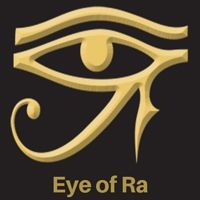 The Eye of Ra is a symbol associated with the Sun because Ra is an Egyptian Sun God. While many confuse the Eye of Ra and the Eye of Horus as one and the same, the symbols are entirely different. The Eye of Ra is the right while the Eye of Horus is the left.
The Eye of Ra is a symbol associated with the Sun because Ra is an Egyptian Sun God. While many confuse the Eye of Ra and the Eye of Horus as one and the same, the symbols are entirely different. The Eye of Ra is the right while the Eye of Horus is the left.
Some myths associate the Eye of Ra with the fires of the Sun. Other stories associate the eye with the light of the Sun because Ra sent the eye out to look for his children when they went to examine the primordial waters and did not return.
Eye of Horus Pagan Symbol and Meaning
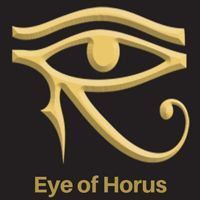 The Eye of Horus is the left Eye of the Sky God. Horus fought with his Set (his uncle), and during the battle, his left eye was injured. The god Thoth was called upon to help heal Horus’ left eye. This eye injury is one corresponding to the three phases of the moon (the uninjured eye represents the moon as it is full, while the injured eye represents the waxing and waning moons respectively. The new moon signifies the healing time it takes for Horus’ eye to recover.
The Eye of Horus is the left Eye of the Sky God. Horus fought with his Set (his uncle), and during the battle, his left eye was injured. The god Thoth was called upon to help heal Horus’ left eye. This eye injury is one corresponding to the three phases of the moon (the uninjured eye represents the moon as it is full, while the injured eye represents the waxing and waning moons respectively. The new moon signifies the healing time it takes for Horus’ eye to recover.
The Wedjat is another reference to the Eye of Horus. It is an icon representing healing. It is also a powerful form of protection, serving as a popular amulet among pagans.
Ankh Pagan Symbol and Meaning
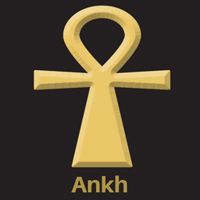 The “crux ansata,” “Key of Life,” or the Ankh is a symbol of protection. The structure of the icon is cross-like in design. The ancient hieroglyph for life. The ankh appears on the tomb walls, with deities like Isis, Nephthys, and others holding the ankh in their hands.
The “crux ansata,” “Key of Life,” or the Ankh is a symbol of protection. The structure of the icon is cross-like in design. The ancient hieroglyph for life. The ankh appears on the tomb walls, with deities like Isis, Nephthys, and others holding the ankh in their hands.
The ankh, also known as key of life, the key of the Nile or crux ansata (Latin meaning “cross with a handle”), was the ancient Egyptian hieroglyphic character that read “life, a triliteral sign for the consonants. It looks a lot like a Christian Cross, and it signifies ever-lasting life and resurrection.
Wheel of Dharma Pagan Symbol and Meaning
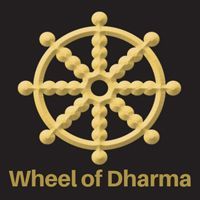 The path consists of eight principles which are categorized into three concepts: Moral Virtual, Meditation, and Wisdom & Insight. The Moral Virtue categorization includes “Right Livelihood,” “Right Speech,” and “Right Action.” Under Meditation, the principles include “Right Concentration,” “Right mindfulness,” and “Right Effort.” The final categorization, Insight & Wisdom, includes the principles of “Right view,” and “Right Resolve.
The path consists of eight principles which are categorized into three concepts: Moral Virtual, Meditation, and Wisdom & Insight. The Moral Virtue categorization includes “Right Livelihood,” “Right Speech,” and “Right Action.” Under Meditation, the principles include “Right Concentration,” “Right mindfulness,” and “Right Effort.” The final categorization, Insight & Wisdom, includes the principles of “Right view,” and “Right Resolve.
Mjolnir Pagan Symbol and Meaning
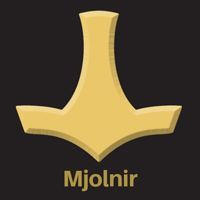 The term “Mjolnir” originates from the Old Norse and it is a hammer belonging to the Norse deity Thor. In Norse myth, the god of Thunder is Thor. The word means “crusher.” The latter reference makes clear the powerful effect the hammer has when someone wields it. The Mjolnir is a Viking-Age weapon rendering Thor with the ability to crush mountains into dust. The hammer looks like an upside-down sledgehammer in a cross-like configuration. Sometimes the hammer features spirals, knots, and other ornate designs. Today, Germanic Neopagans often carry or wear the “Mjolnir” as a symbol of their belief system. Note: The Mjolnir, like the pentacle/pentagram, is sometimes seen as having negative connotations, particularly by those outside of esoteric circles who may not understand the full meaning of the symbol.
The term “Mjolnir” originates from the Old Norse and it is a hammer belonging to the Norse deity Thor. In Norse myth, the god of Thunder is Thor. The word means “crusher.” The latter reference makes clear the powerful effect the hammer has when someone wields it. The Mjolnir is a Viking-Age weapon rendering Thor with the ability to crush mountains into dust. The hammer looks like an upside-down sledgehammer in a cross-like configuration. Sometimes the hammer features spirals, knots, and other ornate designs. Today, Germanic Neopagans often carry or wear the “Mjolnir” as a symbol of their belief system. Note: The Mjolnir, like the pentacle/pentagram, is sometimes seen as having negative connotations, particularly by those outside of esoteric circles who may not understand the full meaning of the symbol.
Om Pagan Symbol and Meaning
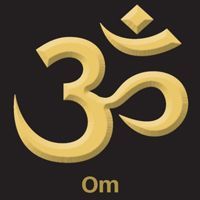 “Om” is a sound considered a sacred utterance by followers of Hinduism, Jainism, and Buddhism. “Om” is also known as “aksara,” “pranava,” “ekākṣara,” “omkara,” or “onkara.” Followers of the latter-mentioned faith systems use the “Om” syllable in chanting (a practice performed for the purposes of achieving an altered state of consciousness), either as part of a meaningful mantra, or by itself.
“Om” is a sound considered a sacred utterance by followers of Hinduism, Jainism, and Buddhism. “Om” is also known as “aksara,” “pranava,” “ekākṣara,” “omkara,” or “onkara.” Followers of the latter-mentioned faith systems use the “Om” syllable in chanting (a practice performed for the purposes of achieving an altered state of consciousness), either as part of a meaningful mantra, or by itself.
The sound “Om” is, itself, symbolic, encompassing the concepts of consciousness and true reality untainted by erroneous human perceptions. Om also refers to the internal world of the individual and the human soul: This concept is known as the Atman. The “Om” symbol has various meanings and refers to wisdom, spirit, the Divine, and the cosmos. As an incantation, “Om” is recited before and after prayers and in ceremonial rites. Some practitioners of Yoga also use the incantation.
Yin-Yang Pagan Symbol and Meaning
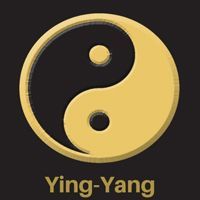 The Yin-Yang symbol represents the balance between complementary energy forces. Yin is feminine energy while Yang is it’s opposite. The symbol itself demonstrates how each force holds within it a little bit of its opposing force, and this contributes to the harmony of yin-yang energies. Yang is action-oriented, assertive, and projective. Yin is passive (not submissive), open, and receptive. Yang refers to the physical world, the concrete, facts, and science; Yin represents the otherworldly realm, the abstract, psychic and intuitive forces, and the esoteric. The Yin-Yang symbol is the perfect expression of duality.
The Yin-Yang symbol represents the balance between complementary energy forces. Yin is feminine energy while Yang is it’s opposite. The symbol itself demonstrates how each force holds within it a little bit of its opposing force, and this contributes to the harmony of yin-yang energies. Yang is action-oriented, assertive, and projective. Yin is passive (not submissive), open, and receptive. Yang refers to the physical world, the concrete, facts, and science; Yin represents the otherworldly realm, the abstract, psychic and intuitive forces, and the esoteric. The Yin-Yang symbol is the perfect expression of duality.
Pagan Symbols, Planets, and Astrology
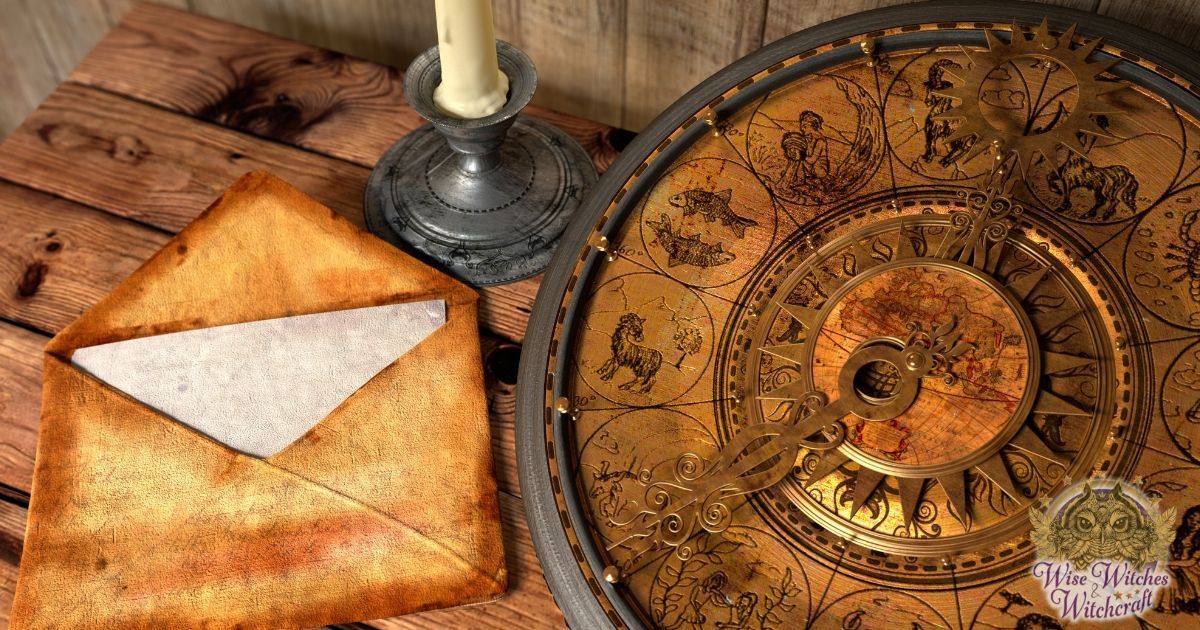
Among some of the most common pagan symbols are planetary or celestial. Symbols representing celestial bodies encapsulate planetary influence and astrological associations. Many planets derive their names from deities. Thus, the symbols also signify gods or goddesses from which the planet’s names originate.
Sometimes, a planet’s symbol might appear on an amulet or talisman. In either event, the practitioner is seeking to benefit from the planet’s energies. Or, the practitioner is seeking protection from the deity corresponding with the planet.
[wisew_rectangle_large align=”right”]Almanacs contain planetary symbols some pagans use for growing or cultivating herbs. Almanacs also offer information that proves helpful when planning magickal workings. The symbols are most common in astrological charts. Planets icons might appear in a specific house in a natal chart. They can also signify the planetary influence over a specific sun sign.
Some practitioners might reference planets or planetary hours. The hours define the best time for specific magickal operations. Thus, symbols representing planets might appear in the instructions for spell casting. The symbols might also appear in a practitioner’s Book of Shadows. Planetary symbols appear in standard and magickal almanacs, as many symbols are easy means for noting ideal times for planting vegetables and herbals.
The icons are shorthand for magickal notations. When writing spells, a practitioner might seek the influence of a specific planet. The symbols for one or more planet might appear on parchment. Other means for attracting influence include carving the symbol on candles or tools.
Pagan Symbols and What They Mean in Astrology
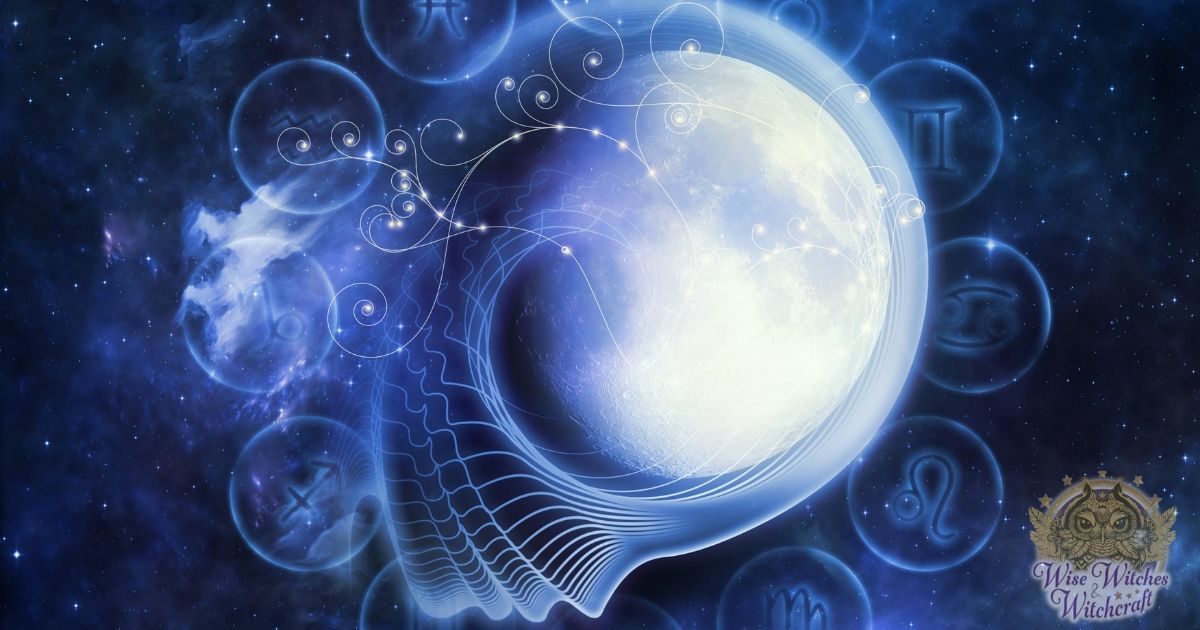
In Western, Eastern, and Vedic Astrology, a planet influences each of the 12 Zodiac signs. Astrology is a modern practice of divining by stars and celestial bodies. The practice has roots stemming back to ancient Babylonian and Mesopotamian cultures.
Through the centuries, the art of determining horoscopes has undergone an evolution. In ancient times, seven planets were presiding over the zodiac. Why is there seven instead of nine planets? The planets Neptune and Pluto were still undiscovered. (Yes, we’re old school and still consider Pluto in the count even when it’s a dwarf planet!) Thus, some planets hold influence over more than one zodiac sign.
Today, the planets Neptune and Pluto influence zodiac signs as well. Some astrologers use the ancient correspondences still. Others will use both ancient and modern planetary correspondences when casting horoscopes and analyzing Sun Signs. When using both, ancient references are “archaic,” and modern correspondences are “current.”
Using Pagan Symbols in Astrology
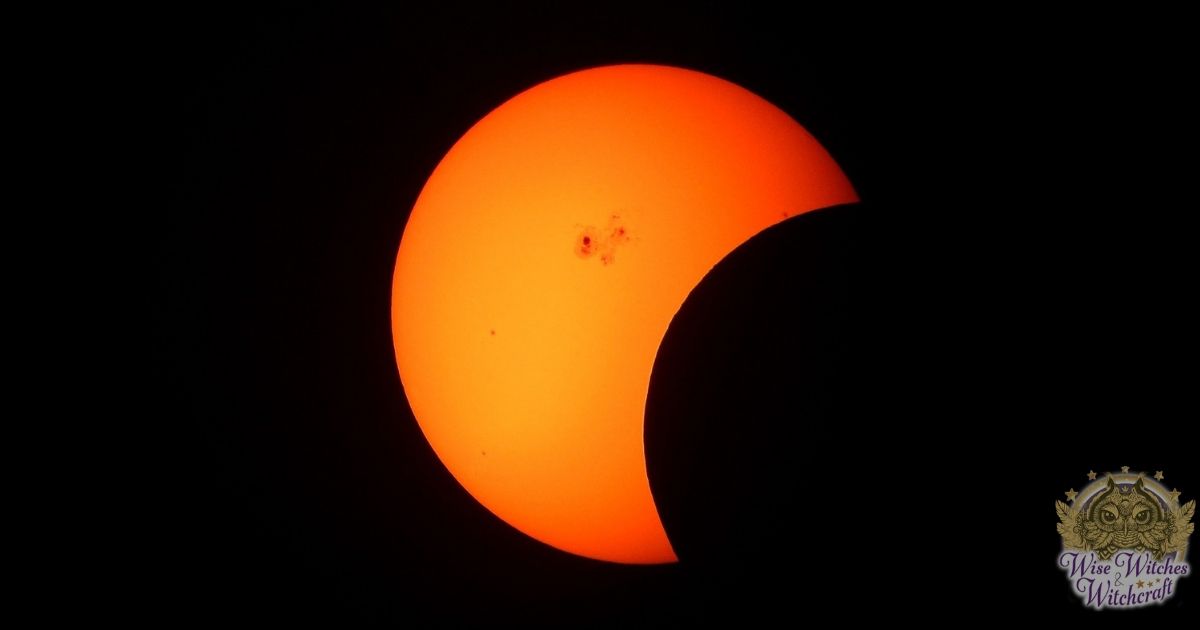
Those pagans who have a penchant for astrology might use the symbols to make predictions about upcoming events. Birth or natal charts, Sun Signs, or daily, weekly, or monthly horoscopes prove useful for planning important events. Some pagans might rely on astrology to determine compatibility or the Synastry between two people.
Astrological symbols also work well with spell work. A practitioner can use the alchemical or astronomical symbols relating to astrology for many purposes. The uses of such symbols include:
- In class notations and shorthand.
- Casting a natal chart.
- Documenting research relating to relationships, including friendships and familial connections.
- Making notations when considering a person’s personality traits under a specific star sign.
- Documenting astrological information in a grimoire or Book of Mirrors.
- Carving into magickal tools for tool identification or protection.
- Drawing the symbols in the air with a finger or wand during spellwork.
- Writing on parchment while using symbols to align with specific astrological times or energies.
- Meditation focus.
Zodiac Signs and Pagan Symbolism
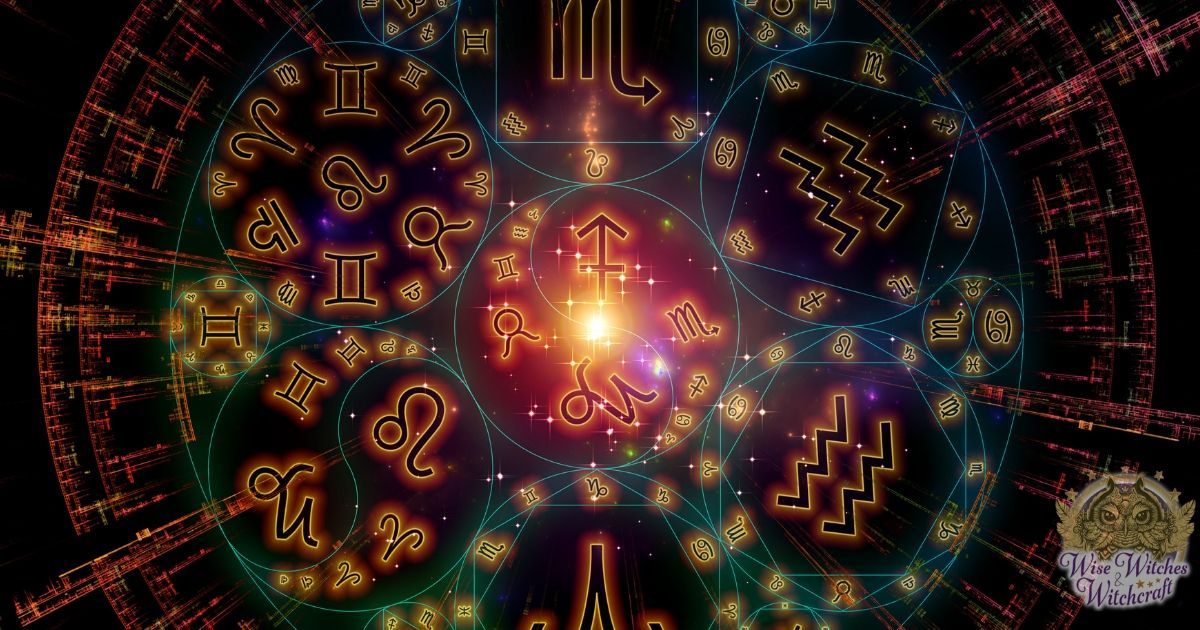
“Nature is a temple in which living columns sometimes emit confused words. Man approaches it through forests of symbols, which observe him with familiar glances.”
– Charles Baudelaire
Below are the 14 Zodiac signs and the symbols corresponding to them. That’s right! There are fourteen symbols if you include the lesser-known Ophiuchus and Cetus symbols in Western Astrology. Ophiuchus cover the time between November 23 and December 29. Cetus rules those born on March 14th only because the Sun enters the constellation for one day.
Aries Zodiac and Pagan Symbol Meaning
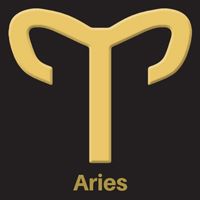 The astrological or zodiac symbol for Aries is a glyph comprising a single line that splits into two. The two lines then curve out and away from each other to create horns. The straight line represents the slender, long face of the Ram. The horns and slim face signify the animal corresponding with Aries, the Ram. Some soul astrologists consider the symbol much like a new plant shoot pushing up through the earth.
The astrological or zodiac symbol for Aries is a glyph comprising a single line that splits into two. The two lines then curve out and away from each other to create horns. The straight line represents the slender, long face of the Ram. The horns and slim face signify the animal corresponding with Aries, the Ram. Some soul astrologists consider the symbol much like a new plant shoot pushing up through the earth.
For more information on the Aries personality and the Western Zodiac, visit our site Building Beautiful Souls!
Cetus Zodiac and Pagan Symbol Meaning
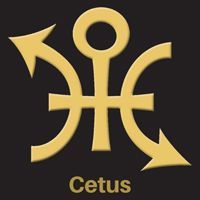 This is one of those zodiac signs few people acknowledge in the Western Zodiac. Cetus is the 14th sign in the Zodiac, and it covers the shortest time span in the year. There’s only one day in the Cetus cycle on March 14. The Sun moves through the constellation on that day only. It has a glyph that looks like a fish. But, it represents its much large aquatic creature, the whale.
This is one of those zodiac signs few people acknowledge in the Western Zodiac. Cetus is the 14th sign in the Zodiac, and it covers the shortest time span in the year. There’s only one day in the Cetus cycle on March 14. The Sun moves through the constellation on that day only. It has a glyph that looks like a fish. But, it represents its much large aquatic creature, the whale.
Taurus Zodiac and Pagan Symbol Meaning
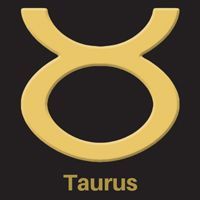 The “Steer of Heaven” or glyph for Taurus follows a similar design as the icon for Aries. The round circle represents the face of the bull. The two lines extending outward and curving to opposing sides depict bullhorns.
The “Steer of Heaven” or glyph for Taurus follows a similar design as the icon for Aries. The round circle represents the face of the bull. The two lines extending outward and curving to opposing sides depict bullhorns.
For more information on the Taurus personality and the Western Zodiac, visit our site Building Beautiful Souls!
Gemini Zodiac and Pagan Symbol Meaning
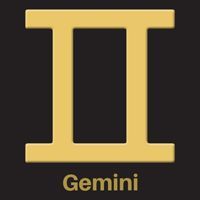 The Sumero-Babylonian called Gemini “The Great Twins.” In ancient Rome, the twins in the Gemini constellation are Castor and Pollux. The glyph for this zodiac looks like the Roman numeral for “two.” Each “I” configuration in the glyph represents one of the two Gemini twins.
The Sumero-Babylonian called Gemini “The Great Twins.” In ancient Rome, the twins in the Gemini constellation are Castor and Pollux. The glyph for this zodiac looks like the Roman numeral for “two.” Each “I” configuration in the glyph represents one of the two Gemini twins.
For more information on the Gemini personality and the Western Zodiac, visit our site Building Beautiful Souls!
Cancer Zodiac and Pagan Symbol Meaning
 The ancient Babylonians aligned Cancer with “The Crayfish.” This glyph’s meaning isn’t as obvious as other ancient pagan symbols in astrology. It’s a symbol that looks like number 6 and number 9. Both numbers are in a horizontal position as if they have fallen over. The number six is on top of the number 9 figure. Cancer’s glyph itself represents the claws of a crab.
The ancient Babylonians aligned Cancer with “The Crayfish.” This glyph’s meaning isn’t as obvious as other ancient pagan symbols in astrology. It’s a symbol that looks like number 6 and number 9. Both numbers are in a horizontal position as if they have fallen over. The number six is on top of the number 9 figure. Cancer’s glyph itself represents the claws of a crab.
Six and nine are numerical figures that are smooth and flowing without interruption until they end at a point reconnecting to the initial line. With a smooth flow might signify the flow of water as Cancer is Water Sun under the rulership of the Moon.
For more information on the Cancer personality and the Western Zodiac, visit our site Building Beautiful Souls!
Leo Zodiac and Pagan Symbol Meaning
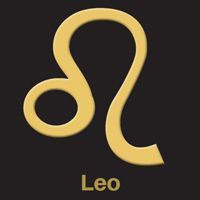 Yes, the glyph for Leo the Lion seems bizarre when we first look at the symbol it looks like a weird doodle. The symbol consists of a small circle with a curving line extending out and away from it. The glyph represents a lion and its mane.
Yes, the glyph for Leo the Lion seems bizarre when we first look at the symbol it looks like a weird doodle. The symbol consists of a small circle with a curving line extending out and away from it. The glyph represents a lion and its mane.
For more information on the Leo personality and the Western Zodiac, visit our site Building Beautiful Souls!
Virgo Zodiac and Pagan Symbol Meaning
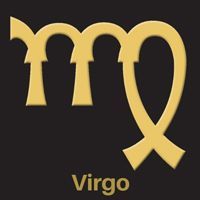 Ancient Babylonians referred to the sign of Virgo as “Shala’s ear of corn,” or “The furrow.” In Western Astrology, Virgo is the sign of “The Maiden or Virgin.” The symbol represents a female carrying with her a shaft of wheat. Like learning French, for glyphs like Cancer, Leo, and Virgo, you either know what it’s depicting, or you don’t! It is hard to guess whereas other pagan symbols are far more obvious regarding what they represent.
Ancient Babylonians referred to the sign of Virgo as “Shala’s ear of corn,” or “The furrow.” In Western Astrology, Virgo is the sign of “The Maiden or Virgin.” The symbol represents a female carrying with her a shaft of wheat. Like learning French, for glyphs like Cancer, Leo, and Virgo, you either know what it’s depicting, or you don’t! It is hard to guess whereas other pagan symbols are far more obvious regarding what they represent.
For more information on the Virgo personality and the Western Zodiac, visit our site Building Beautiful Souls!
Libra Zodiac and Pagan Symbol Meaning
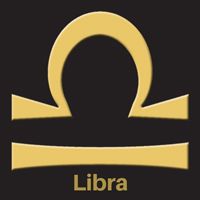 The glyph for Libra is a lot easier to figure out. It consists of a straight, horizontal line and another line with a curve in the middle hovering over it. When you know the Sign of Libra aligns with scales, what the glyph is depicting is far clearer.
The glyph for Libra is a lot easier to figure out. It consists of a straight, horizontal line and another line with a curve in the middle hovering over it. When you know the Sign of Libra aligns with scales, what the glyph is depicting is far clearer.
For more information on the Libra personality and the Western Zodiac, visit our site Building Beautiful Souls!
Scorpio Zodiac and Pagan Symbol Meaning
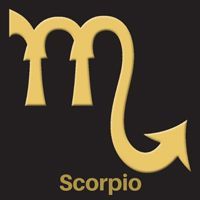 It’s interesting to note how much the sign of Virgo and the sign of Scorpio look similar for glyph comparisons. The Scorpio glyph relates to the Scorpion. The figure looks like the letter “M” with a long swinging stem at the end curving upward. The stem represents the Scorpion’s tale and barb!
It’s interesting to note how much the sign of Virgo and the sign of Scorpio look similar for glyph comparisons. The Scorpio glyph relates to the Scorpion. The figure looks like the letter “M” with a long swinging stem at the end curving upward. The stem represents the Scorpion’s tale and barb!
For more information on the Scorpio personality and the Western Zodiac, visit our site Building Beautiful Souls!
Ophiuchus Zodiac and Pagan Symbol Meaning
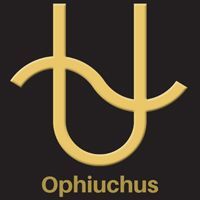 This zodiac covers a time frame of a few short days in November. The symbol is that of the Serpent-Bearer. The glyph is reminiscent of stories of Hercules battling two snakes in his cradle as a baby. A letter “U” with a swerving horizontal line running through it is the glyph for Ophiuchus. The “U” representing the hands of the serpent-bearer and the swerving line signifying the serpent.
This zodiac covers a time frame of a few short days in November. The symbol is that of the Serpent-Bearer. The glyph is reminiscent of stories of Hercules battling two snakes in his cradle as a baby. A letter “U” with a swerving horizontal line running through it is the glyph for Ophiuchus. The “U” representing the hands of the serpent-bearer and the swerving line signifying the serpent.
Sagittarius Zodiac and Pagan Symbol Meaning
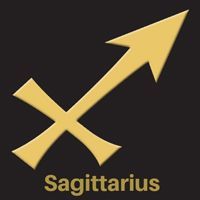 The ancient Babylonians called Sagittarius the “Solider.” Today, it is an Archer depicted by the Centaur. The glyph is an arrow pointing in a Northeastern direction. The straight line in the arrow has a small vertical line running through it. Sagittarius’ glyph is a simple bow and arrow design. You can imagine an archer drawing back a bow with an arrow ready for flight.
The ancient Babylonians called Sagittarius the “Solider.” Today, it is an Archer depicted by the Centaur. The glyph is an arrow pointing in a Northeastern direction. The straight line in the arrow has a small vertical line running through it. Sagittarius’ glyph is a simple bow and arrow design. You can imagine an archer drawing back a bow with an arrow ready for flight.
For more information on the Sagittarius personality and the Western Zodiac, visit our site Building Beautiful Souls!
Capricorn Zodiac and Pagan Symbol Meaning
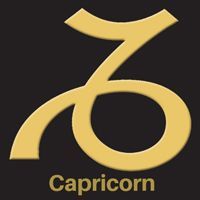 A glyph for Capricorn is one of those no-guessing scenarios. You either know what it means, or you don’t. Why? Because the glyph gives no hints about meaning! The sign of Capricorn has a Sea-Goat as the creature representing it. Thus, the glyph is a simple line drawing of the sea goat with horns. It looks more like the lower-case letter “n” with a wavy line on the end of it!
A glyph for Capricorn is one of those no-guessing scenarios. You either know what it means, or you don’t. Why? Because the glyph gives no hints about meaning! The sign of Capricorn has a Sea-Goat as the creature representing it. Thus, the glyph is a simple line drawing of the sea goat with horns. It looks more like the lower-case letter “n” with a wavy line on the end of it!
For more information on the Capricorn personality and the Western Zodiac, visit our site Building Beautiful Souls!
Aquarius Zodiac and Pagan Symbol Meaning
 Of all the zodiac glyphs, Aquarius has one of the easiest to spot, identify, and remember. Two horizontal, parallel wavy lines. That’s all there is to it. For the sign, the ancient Babylonians called “The pitcher” or “The Great One,” two simple lines define water for Aquarius. In Western astrology the Water Bearer signifies Aquarius.
Of all the zodiac glyphs, Aquarius has one of the easiest to spot, identify, and remember. Two horizontal, parallel wavy lines. That’s all there is to it. For the sign, the ancient Babylonians called “The pitcher” or “The Great One,” two simple lines define water for Aquarius. In Western astrology the Water Bearer signifies Aquarius.
For more information on the Aquarius personality and the Western Zodiac, visit our site Building Beautiful Souls!
Pisces Zodiac and Pagan Symbol Meaning
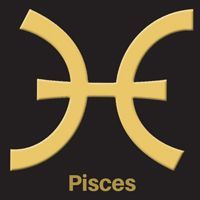 This sign always seems like a Gemini sign turned inside out! It has to lines running parallel to one another. The lines curve outward in opposing directions. But, they have a single line keeping the two lines together. The Babylonians might call this line “fish cord.” The sign of Pisces is two fish swimming in opposite directions. But, they always remain connected to one another. The cord tying them together is the sutratama, “meaning the thread of life.”
This sign always seems like a Gemini sign turned inside out! It has to lines running parallel to one another. The lines curve outward in opposing directions. But, they have a single line keeping the two lines together. The Babylonians might call this line “fish cord.” The sign of Pisces is two fish swimming in opposite directions. But, they always remain connected to one another. The cord tying them together is the sutratama, “meaning the thread of life.”
For more information on the Pisces personality and the Western Zodiac, visit our site Building Beautiful Souls!
Pagan Symbolism and Planetary Hours
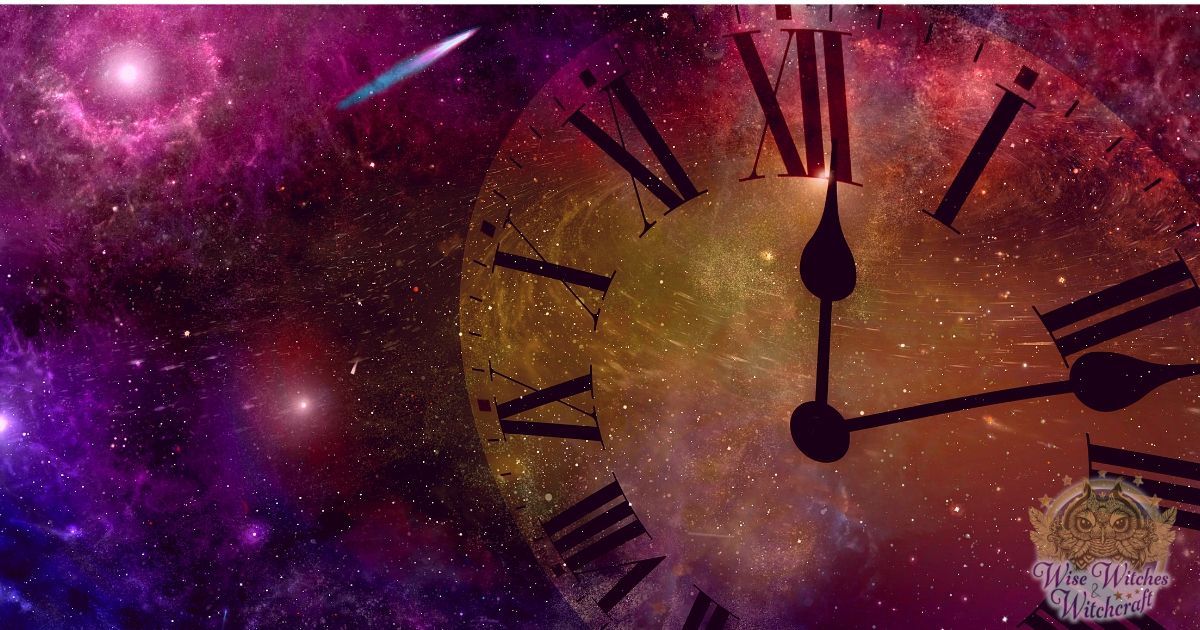
“I’m working to bring celestial objects like the sun and moon into the spaces that we inhabit.”
– James Turrell
Each planet has a specific energy that can influence people or conditions negatively or positively. How a planet influences something depends on myriad factors. A planet entering a specific zodiac sign will influence the sign based on the house(s) it appears in, and the planetary motion in the sky.
For instance, most people understand Mercury as the planet of communication. If it enters the first house in someone’s astrological chart, (The House of Self), then a person might be a master communicator or someone who is too talkative. But, when the planet goes retrograde or seems to move backward in the sky (it doesn’t really), it wreaks havoc in all areas of communication. The chaos Mercury retrograde brings lasts several weeks and influences all Sun Signs.
We can also choose to align magickal workings with select planetary energies. The old school way of doing this is to figure out the precise planetary hours. Once the hours are determined, we can move forward with the appropriate correspondences to enhance our magickal workings in positive ways. Let’s examine some of the influences each planet exerts on people and conditions. There are plenty of pagan symbols to explore and learn about in the process!
Sun Planetary Influence and Pagan Symbolism
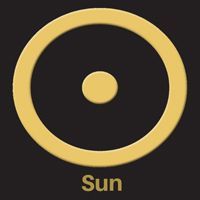 The Sun rules Sunday. As seen earlier, the Sun’s symbol is a dot sitting inside a circle’s center. A dot inside the center of the symbol signifies potential. The outer circle signifies the Divine Spirit. Due to solar energies, this day aligns with masculine energies. It is a day suitable for honoring the masculine divine in His Father, Son, and Sage aspects.
The Sun rules Sunday. As seen earlier, the Sun’s symbol is a dot sitting inside a circle’s center. A dot inside the center of the symbol signifies potential. The outer circle signifies the Divine Spirit. Due to solar energies, this day aligns with masculine energies. It is a day suitable for honoring the masculine divine in His Father, Son, and Sage aspects.
Since the Sun is the source of nourishing and replenishment, it is also a great day for energy workings and enhancements. This is an outstanding day when seeking enlightenment and illumination. Suitable magickal workings include:
- Growth
- Power
- Protection
- Rejuvenation
- Spirituality
- Strength
As a fiery influence, the Sun corresponds with compassion, love, and amiable moods. It’s the best time for working spells for increasing socialization, abundance, prosperity, hope, faith, good luck, or for inducing change.
Anything you want to empower you can charge on this day. The planet also influences the sign of Leo. Gold, orange, yellow, and amber are suitable colors for the day. Consider working with solar deities like Ra, Helios, and Mithras. In its phases, the moon symbolizes awakening and increasing psychic awareness. It signifies movement, not just through physical stages during one’s incarnation, but also spiritual progression.
Moon Planetary Influence and Pagan Symbolism
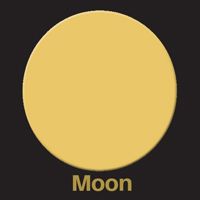 The Moon rules Monday. Any of the moon signs can represent the Moon’s planetary influence. The lunar energies align with the feminine energies and the element of water. Consider working with lunar goddesses. You can call upon Luna, Selene, or Diana in your workings. Monday is an excellent day for performing:
The Moon rules Monday. Any of the moon signs can represent the Moon’s planetary influence. The lunar energies align with the feminine energies and the element of water. Consider working with lunar goddesses. You can call upon Luna, Selene, or Diana in your workings. Monday is an excellent day for performing:
- Cleansings
- purifications
- psychic awareness spell work
- Dreamwork
- Peace
- Healing
If seeking arcane knowledge or understanding, Monday is the best day for such studies. The Moon’s influence makes Monday a suitable day for honoring the Maiden, Mother, and Crone aspects of the goddess. Divination is perfect for Mondays due to the lunar energies’ influence and association with the mysteries.
Mars Planetary Influence and Pagan Symbolism
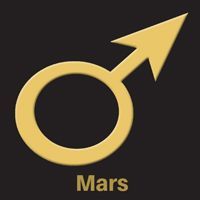 Tuesday is the day for magickal work. The symbol for this planet consists of a circle with a small arrow point out from its circumference in a Northeastern direction. The icon serves as a representation of Mars’ shield and spear.
Tuesday is the day for magickal work. The symbol for this planet consists of a circle with a small arrow point out from its circumference in a Northeastern direction. The icon serves as a representation of Mars’ shield and spear.
It also signifies gradual upward or forward movement (arrow) but with divine assistance or approval (circle). In other words, spiritual ascension or the attainment of enlightenment when the Universe or creator decrees. Or, the symbol can signify the pursuit of new heights (ambition) while retaining firm roots to ensure grounding.
Mars is the God of War. He is akin to other gods from a variety of pantheons including deities like Tyr, Tiwaz, Tiw, and Aries. His energies are progressive, aggressive, and powerful. Additional works appropriate for Mars’ influence include:
- Rituals of personal empowerment
- Increasing one’s focus
- Improving concentration
- Affirmations
The planetary influence corresponding with Mars includes protection, sex, aggression, passion, stamina, strength, longevity, personal energy, and power. Ideal spellwork under Mars’ influence includes anything to do with competition, athleticism, protection, conflicts, contests, politics, arguments, conquering negative situations or energies, breaking free of imprisonment, hunting, and bravery.
Mercury Planetary Influence and Pagan Symbolism
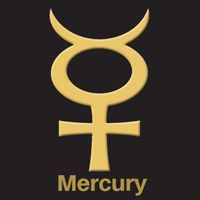 Wednesday is the day to perform work if you want Mercury’s influence. Mercury gets its name from the Roman god of the same name. Mercury (or Hermes in Greek) is the Messenger God or the God of Communication. He is the patron deity of merchants and a trickster god. Mercury rules over boundaries. Gemini and Virgo fall under Mercurial influences.
Wednesday is the day to perform work if you want Mercury’s influence. Mercury gets its name from the Roman god of the same name. Mercury (or Hermes in Greek) is the Messenger God or the God of Communication. He is the patron deity of merchants and a trickster god. Mercury rules over boundaries. Gemini and Virgo fall under Mercurial influences.
The planet’s energies stir one’s intellect. Mercury corresponds with quick and clear thinking. Because the planet is the namesake of a trickster deity, the energies also correspond to wit and good humor. Magickal operations can include:
- Communication of all kinds
- Entrepreneurial pursuits
- Success at work
- Expansion of personal boundaries
If you’re experiencing difficulty with expressing yourself, Mercurial empowerment is what you need! Psychic work where one breaks through the veil to the spirit realm is also possible under its influence. The right planetary hour can make communication with spirit(s) easier to achieve.
The symbol for Mercury signifies the mind (with the horns or crescent representing the mind). Beneath the crescent is a circle representing the Divine. The cross beneath the circle signifies matter. Thus, Mercury’s glyph means mind over the Divine and matter.
Jupiter Planetary Influence and Pagan Symbolism
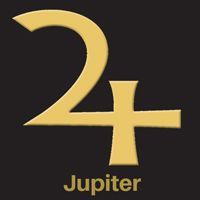 For spellwork involving growth, expansion, and prosperity, you’ll want Jupiter’s influence. The best day for such empowerment is Thursday. Jupiter’s influence is best for workings creative or out-of-the-box thinking. Where Mercury rules communication and the intellect, Jupiter rules abstract mind.
For spellwork involving growth, expansion, and prosperity, you’ll want Jupiter’s influence. The best day for such empowerment is Thursday. Jupiter’s influence is best for workings creative or out-of-the-box thinking. Where Mercury rules communication and the intellect, Jupiter rules abstract mind.
Academic pursuits, the exploration of both intellect and spirit fall under this planet’s domain. When you need help solidifying ideas, you can call on the Roman deity Jupiter, the King of the Gods. If you prefer Greek myth, call upon Zeus as the two are one and the same.
He is analogous with Odin, the Father of the Gods in Norse myth, and Tinia from Etruscan myth as well.
Jupiter is the god of Thunder and the Sky. Zeus is the God of the Sky and Lightning. Think “when lightning strikes,” as the spark of ideas and the sky as the realm of thoughts. Then you can begin to understand the influence of Jupiter as being intellectual, philosophical, and spiritual. Conduct workings during Jupiter’s planetary hours or on Thursday for the following tasks:
- Wealth and prosperity
- Charitable works
- Personal growth
- Intellectual pursuits
- Business endeavors
- Expansion
- Abundance
- Fertility
- New beginnings
- Creative endeavors
- Legal issues
While Jupiter’s symbol appears to be a fancy numerical figure, it retains more meaning than its simple appearance conveys. The symbol comprises of different components. The portion of the symbol looks like the number two. The second portion looks like an inverted cross. In its entirety, the figure looks like an artistic rendition of the number four. The “two” configuration is zeta: a letter in the Greek alphabet.
Zeta signifies knowledge one achieves through experience and in degrees or over the course of time. The portion of the symbol suggests unity, meeting in the middle, or it can represent a crossroad. The cross also signifies balance and harmony.
In our solar system, Jupiter is the largest planet. It is like the hub of our solar system. Why? The planets Mercury, Venus, Earth, and Mars, are on one side of the Jupiter. The planets Saturn, Uranus, Neptune, and Pluto, extend out into space from the opposing side. This has Jupiter nestling in between four planets on either side.
The configuration of the planets in space, with Jupiter in the center, signifies balance. Thus, the planet also symbolizes order, perfection, and fairness. The curvature or figure “2” in the symbol represents ascendance. The cross signifies matter. Thus, the symbol signifies ascending over physical matter.
Venus Planetary Influence and Pagan Symbolism
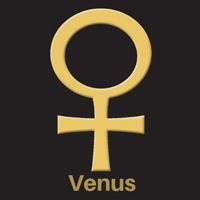 The sign of Venus is also Venus’ necklace or her “hand mirror.” One look at the icon and you can see why! The symbol consists of a small circle resting on an equal-armed cross. As before, the circle signifies the Divine. The cross signifies matter. Thus, the simple equation for the glyph’s meaning is the Divine over matter.
The sign of Venus is also Venus’ necklace or her “hand mirror.” One look at the icon and you can see why! The symbol consists of a small circle resting on an equal-armed cross. As before, the circle signifies the Divine. The cross signifies matter. Thus, the simple equation for the glyph’s meaning is the Divine over matter.
Venus is the Roman goddess of beauty and love. She is analogous with Turan in the Etruscan pantheon. She is also akin to Aphrodite in Greek myth. Given what She governs, the planetary hours of Venus are best for workings involving:
- Relationships
- Love
- Peace
- Friendship
- Harmony
- Compassion
- Charity
- Partnerships
- Unity
- Marriage
The planet rules those who have Libra or Taurus as Sun Signs. The day of the week aligning with Venus if Friday. The weekday gets its name from Freya, the Norse goddess of love.
Saturn Planetary Influence and Pagan Symbolism
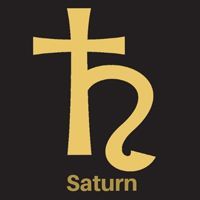 The planet Saturn rules Saturday, as the name of the weekday suggests. The symbol for the planet is a cross with a line curving to the right and downward to form the letter “h.” The glyph represents a scythe or sickle.
The planet Saturn rules Saturday, as the name of the weekday suggests. The symbol for the planet is a cross with a line curving to the right and downward to form the letter “h.” The glyph represents a scythe or sickle.
The configuration of the symbol signifies Matter having greater importance than the mind or spirit. Thus, the planetary hours for Saturn enhance work relating to the physical plane. The sickle belongs to Chronos, the God of Time. The planetary influence of Saturn reminds us that time presses onward, and there’s work at hand.
The planet’s influence reminds us of the limitations put on us by the physical world. Existing in the physical plane forces us to deal with its limitations. Thus, Saturn hours are best for dealing with breaking bad habits or dealing with addictions. It’s a suitable time for cleansings and exorcisms.
This planet also corresponds with long-term conditions, career goals, and karmic lessons. Per the “Key of Solomon,” an ancient grimoire stemming from the 16th century, the hour of Saturn corresponds with spirit communication. Other workings ideal during the hours of Saturn include:
- Home organization
- Increasing concentration on work
- Plowing through obstacles
- Handling personal responsibilities
- Meditation
- Contemplation on future goals
- Rest, respite, and personal refreshing
Defensive magick, psychic protection, and overcoming limitations or boundaries are also practices suitable for Saturn hours. Likewise, enforcing restrictions, limitations, and boundaries is also appropriate. If you are dealing with obstacles, Saturn hours can empower workings with the focus of overcoming challenges.
Remaining Planetary and Celestial Symbols
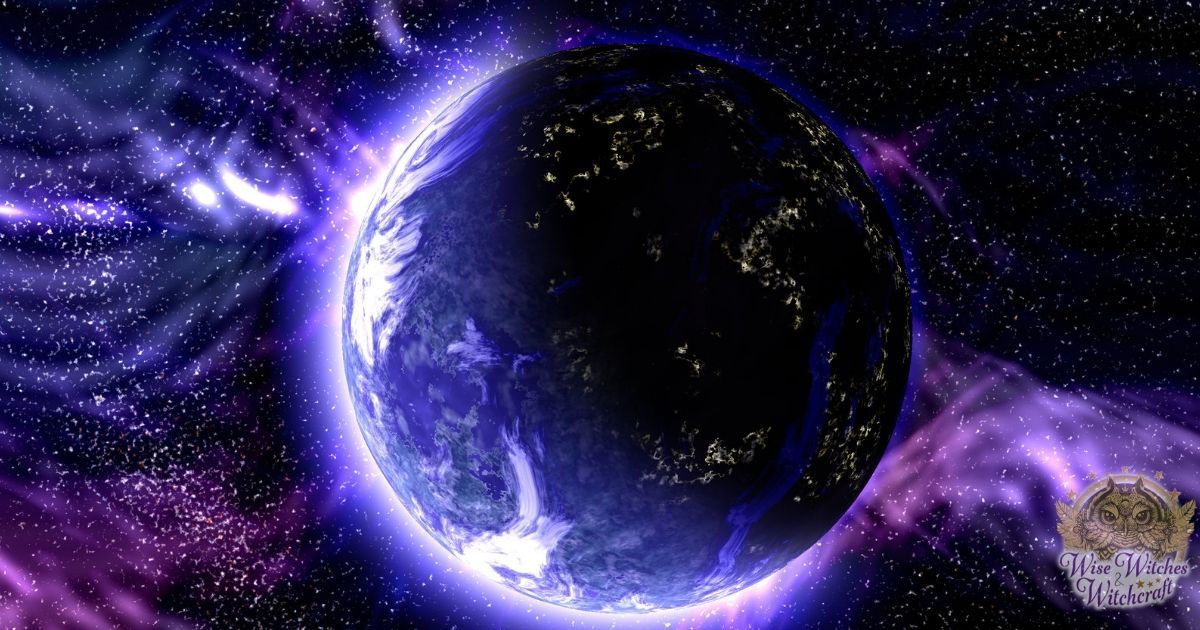
Earth Planetary Influence and Pagan Symbolism
The Earth is not one of the planets influencing astrological signs. However, the Earth symbols are still important pagan symbols for notations and other workings.
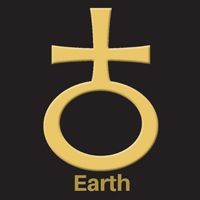 The two symbols shown here are both Earth symbols. The first is a sun cross, featuring a small cross above a circle. The second is a circle with two lines creating four quadrants.
The two symbols shown here are both Earth symbols. The first is a sun cross, featuring a small cross above a circle. The second is a circle with two lines creating four quadrants.
The sections of the circle in the second symbol align with one of the cardinal directions East, South, West, or North. The lines also symbolize meridian lines. Along with the seasons, the four sections of the second Earth symbol can represent:
- Winter, Spring, Summer, Fall
- The Solstices and Equinoxes
- The Four Airts
- The Four Virtues
- The Four Directions of the Native American Medicine Wheel
- The four realms of the mundane, emotion, intellect, and spirit
- The four elements of air, fire, water, and earth
- The four stages of life: birth, youth, elder, and death
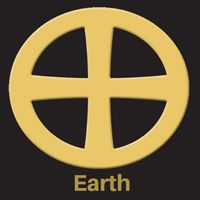 The Earth symbol might denote some of the deities corresponding to the planet from various cultures around the world. Gaia is the Greek Earth Goddess. Cihuacoatl is another example of an Earth deity, as is the Egyptian god Geb. Some Earth symbols correspond with animals, and this will vary from culture.
The Earth symbol might denote some of the deities corresponding to the planet from various cultures around the world. Gaia is the Greek Earth Goddess. Cihuacoatl is another example of an Earth deity, as is the Egyptian god Geb. Some Earth symbols correspond with animals, and this will vary from culture.
Some Native American tribes saw the Earth as existing on the back of a giant turtle. Other cultures stemming from Central and South America associate the Earth with a giant snake. The circle with four quadrants representing Earth is remarkably similar to the Ojibway Native American Medicine Wheel. Thus, the symbol can serve as a representation of the Medicine Wheel in Pagan notations. The wheel is a circle with four separate quarters marked by stones around the circle’s circumference and the cross in the middle. The center stone represents the creator of all life. The center stone has seven stones around it representing the Earth, Sun, Moon, and the Turtle, Frog, Thunderbird, and Butterfly Clans. The four points of each quadrant in the circle’s circumference refer to the cardinal directions. The remaining 12 stones in the circle’s circumference signify the goose, otter, cougar, hawk, beaver, deer, flicker, sturgeon, brown bear, raven, snake, and elk. Three stones from the north position to the center signify cleansing, renewal, and purity.
Three stones running from the eastern point into the circle’s center signify clarity, love, and wisdom. Three stones from the southern point moving inward to the circle’s center signify illumination, growth, and trust. The last three stones starting from the western point into the circle’s center signify experience, introspection, and strength.
Uranus Planetary Influence and Pagan Symbolism
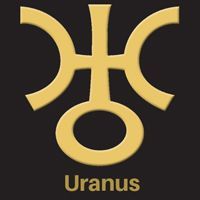 The planet Uranus was discovered in the early 1780s. Its movement through each of the zodiac signs is a lot slower than the other planetary bodies. Thus, this planet’s influence is often generational rather than influencing a single person born under a specific sign. The planet holds sway over those born under the sign of Aquarius.
The planet Uranus was discovered in the early 1780s. Its movement through each of the zodiac signs is a lot slower than the other planetary bodies. Thus, this planet’s influence is often generational rather than influencing a single person born under a specific sign. The planet holds sway over those born under the sign of Aquarius.
The influence of Uranus is out-of-the-box thinking. It causes people to look at things from a new perspective. Innovations correspond with the energies of Uranus. The rapid growth in technologies, changes in human consciousness, and sweeping cultural change lay in the way of Uranus’ energies. Tradition holds little value under Uranus’ influence. It is a planet calling for fast and dramatic change. Breaking rules, crossing boundaries, and progress in giant leaps and strides. All the latter falls under the dominion of Uranus.
Taking about 84 years to work its way through all zodiac signs, when Uranus makes its appearance in a sign, it leaves a lasting impression. The planet is the discovery of William Herschel. The glyph of the planet, at least one of them, represents the last letter of Herschel’s name.
The symbol looks like an “H” with a long vertical line running through it. The line terminates into a circle. The circle signifies spirit, and the cross in the middle of the letter “H” means dominant cross appearing over matter. It equals an antenna for picking up insights while moving through the mundane plane. The insights can lead to self-improvement or greater life goals.
Neptune Planetary Influence and Pagan Symbolism
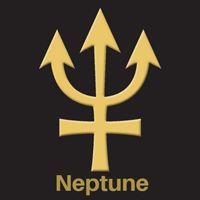 Neptune is a planet influencing the zodiac sign of Pisces. The planet’s symbol is Neptune’s trident featuring three tips and a cross supporting the head of the trident. The planet corresponds with the collective unconscious, dreams, and intuition.
Neptune is a planet influencing the zodiac sign of Pisces. The planet’s symbol is Neptune’s trident featuring three tips and a cross supporting the head of the trident. The planet corresponds with the collective unconscious, dreams, and intuition.
There is also a second symbol for this planet blending the letters “L” and “V.” The two letters represent “Le Verrier,” and is often found in French writings. It is the surname of the man who discovered the planet: Joseph Le Verrier. The letters have a vertical line running through them that terminates into a closed circle.
Since this planet rules dreams and the unconscious, it is right to give it the designation the “Planet of Illusion.” The planetary body was discovered in the late 1840s. Like Uranus, Neptune has a generational influence rather than an intense individual influence.
Neptune has feminine energies. When this planet enters a zodiac sign, it’s no short visit. Neptune remains in the zodiac for 14 years. It takes over 165 years for the planetary body to make its way all constellations in the zodiac wheel.
Yes, the trident symbol represents the god of the sea, but the trident’s points hold a second meaning. The tines signify “The Threefold Essence.” Thus, the points signify “becoming,” “being,” and “dying.” The trident can also signify:
- The three aspects of the masculine Divine
- Mind, body, and spirit
- Past, present, and future.
While seven of the other planets have an everyday influence on people, the planet Neptune’s influence is a long-term process. The trine has myriad representations, but the cross in the handle helps balance whatever concepts it supports. The cross gives the trident a grounding influence, thereby preventing us from being swept away by illusions and lofty dreams.
Pluto Planetary Influence and Pagan Symbolism
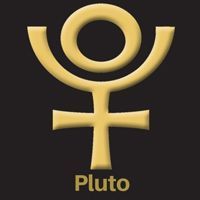 The planet Pluto offers the influence of rebirth, regeneration, and transformation. It aligns with hidden power, the mysteries, and the number zero. It, therefore, signifies the beginning and the end, coming full circle, or the entirety of an idea or concept. Two symbols are representing the planet, with the one looking like a “P” resting on a flat line the easiest to remember.
The planet Pluto offers the influence of rebirth, regeneration, and transformation. It aligns with hidden power, the mysteries, and the number zero. It, therefore, signifies the beginning and the end, coming full circle, or the entirety of an idea or concept. Two symbols are representing the planet, with the one looking like a “P” resting on a flat line the easiest to remember.
Pluto holds influence over:
- Obsession
- Deep psyche
- Transformation
- Rebirth
- The void
- The emergence of idea
[wisew_rectangle_large align=”left”]Pluto was discovered in the 1930s. Pluto may take a long time to make it through every zodiac sign, but when it gets to any sign, it heralds sweeping change. Those who have Pluto influencing any house in their chart will want to brace themselves for what is coming. The change Pluto stirs up is no way subtle. It is akin to chaos kicking things into action to steer your life into the direction of a greater good.
Pluto’s energies align with secrecy. It takes 248 days for this planet to march its way through the zodiac signs. It can take anywhere from 12 to 31 years for the planet to get through a single zodiac sign before moving onto another. Pluto tends to govern and bring in destructive energies, but they are necessary for creation and birth. The Phoenix destroys itself and re-emerges from its own ashes. Those under Pluto’s influence must do the same.
The pagan symbol for Pluto can be used to represent the planet or the Underworld God of the same name. Hades is analogous to Pluto. The PL symbol is the initials of Percival Lowell, who discovered the planet. The second symbol for representing Pluto features a circle and an arc beneath it which is a “bident.” A cross holds up the bident and circle.
The symbolism behind the latter sign is complex for such a simple design. The circle signifies a “cap of invisibility.” The arc beneath it or crescent signifies the mind. The cross signifies matter. Put it all together, and you get the Mind that transcends the material world as it reaches for the spirit of the divine.
Planetary Charts for Use in Determining Energetic Influence
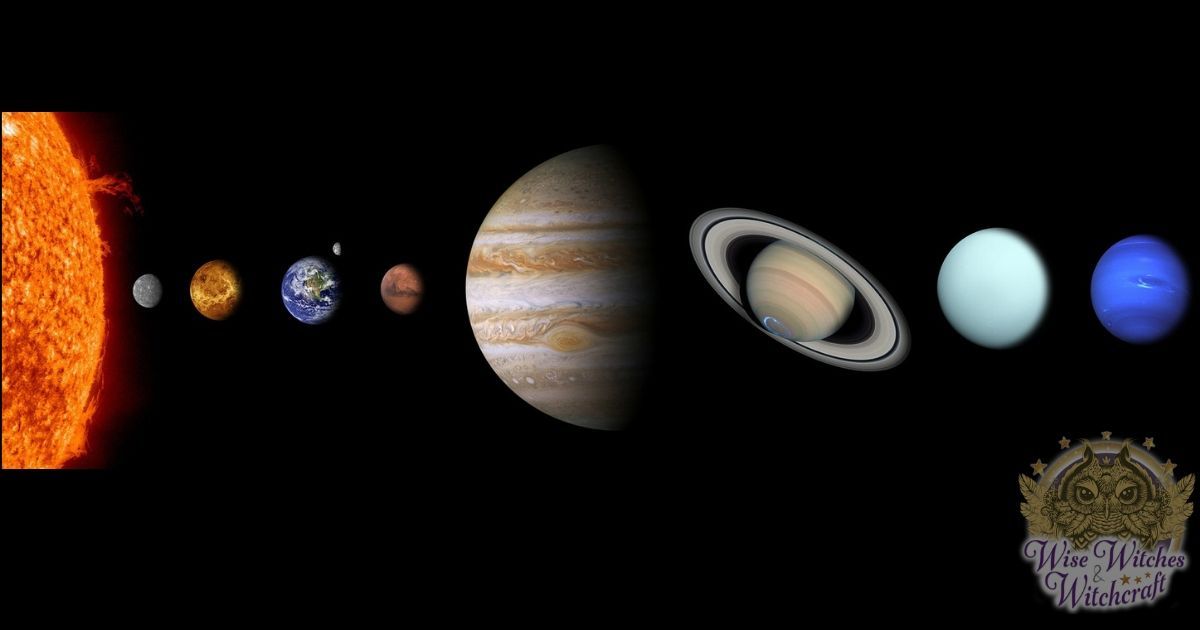
Below is information revealing the planetary influences for every hour the day. Details are listed by day of the week and by the specific hour. Each section has 12 hours, with the first hours starting at sunrise. The second section features hours beginning at sunset.
To use the planetary influence data below, choose the day of the week. Then select the hour you want to perform your workings. The listings note the planetary influences for the hour. This is an excellent tool for planning study time, planting herbs, and casting spells. It’s also an excellent tool for choosing the hour to have a ritual or the hour to plan important events.
You can use the symbols for the planets and corresponding zodiac signs to enhance your workings. Thanks to the Internet and modern technology, figuring out planetary hours is a lot easier. You can either invest in an almanac with specific information for astrologers and Pagans. Or, you can use online planetary hour calculators or websites with planetary hour listings.
We’re sure some readers will appreciate understanding the old-fashioned way of determining the planetary hours. In fact, some pagans prefer the old school means of planetary hour calculation. It’s as if the act of calculation lends to one’s intention and magickal empowerment.
PLANETARY HOURS AT SUNRISE |
|||||||||
HOURS |
SUN |
MON |
TUES |
WEDS |
THURS |
FRI |
SAT |
||
1 |
Sun | Moon | Mars | Mercury | Jupiter | Venus | Saturn | ||
2 |
Venus | Saturn | Sun | Moon | Mars | Mercury | Jupiter | ||
3 |
Mercury | Jupiter | Venus | Saturn | Sun | Moon | Mars | ||
4 |
Moon | Mars | Mercury | Jupiter | Venus | Saturn | Sun | ||
5 |
Saturn | Sun | Moon | Mars | Mercury | Jupiter | Venus | ||
6 |
Jupiter | Venus | Saturn | Sun | Moon | Mars | Mercury | ||
7 |
Mars | Mercury | Jupiter | Venus | Saturn | Sun | Moon | ||
8 |
Sun | Moon | Mars | Mercury | Jupiter | Venus | Saturn | ||
9 |
Venus | Saturn | Sun | Moon | Mars | Mercury | Jupiter | ||
10 |
Mercury | Jupiter | Venus | Saturn | Sun | Moon | Mars | ||
11 |
Moon | Mars | Mercury | Jupiter | Venus | Saturn | Sun | ||
12 |
Saturn | Sun | Moon | Mars | Mercury | Jupiter | Venus | ||
PLANETARY HOURS AT SUNSET |
|||||||||
HOURS |
SUN |
MON |
TUES |
WEDS |
THURS |
FRI |
SAT |
||
1 |
Jupiter | Venus | Saturn | Sun | Moon | Mars | Mercury | ||
2 |
Mars | Mercury | Jupiter | Venus | Saturn | Sun | Moon | ||
3 |
Sun | Moon | Mars | Mercury | Jupiter | Venus | Saturn | ||
4 |
Venus | Saturn | Sun | Moon | Mars | Mercury | Jupiter | ||
5 |
Mercury | Jupiter | Venus | Saturn | Sun | Moon | Mars | ||
6 |
Moon | Mars | Mercury | Jupiter | Venus | Saturn | Sun | ||
7 |
Saturn | Sun | Moon | Mars | Mercury | Jupiter | Venus | ||
8 |
Jupiter | Venus | Saturn | Sun | Moon | Mars | Mercury | ||
9 |
Mars | Mercury | Jupiter | Venus | Saturn | Sun | Moon | ||
10 |
Sun | Moon | Mars | Mercury | Jupiter | Venus | Saturn | ||
11 |
Venus | Saturn | Sun | Moon | Mars | Mercury | Jupiter | ||
12 |
Mercury | Jupiter | Venus | Saturn | Sun | Moon | Mars | ||
Final Takeaway: So Many Pagan Symbols, So Little Time!
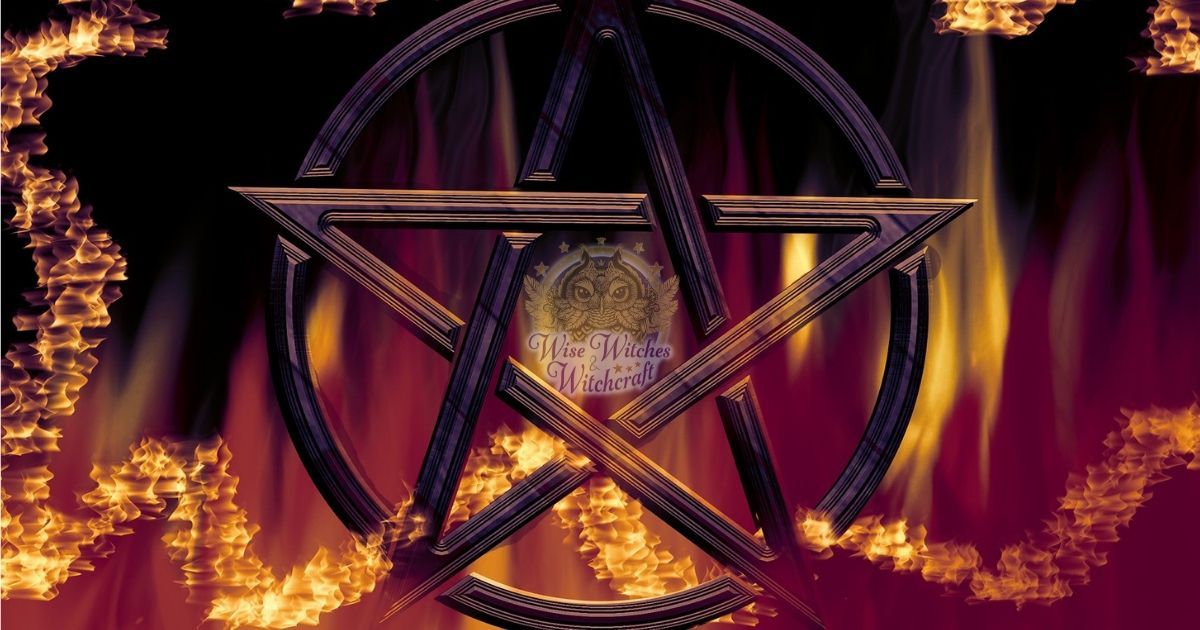
So, in this short writing, we’ve covered a good deal of pagan symbols and meaning. After exploring some of the familiar and lesser-known moon symbols, we dug into the meaning of just a few Divine pagan symbols representing the God, Goddess, or both. Hey, who knew the little glyphs representing the signs of the zodiac and the planets in the sky had such deep meaning and rich pagan roots? Pieces of myth and both ancient and modern Pagan beliefs begin to emerge when we start exploring the vast world of symbols. The symbols you’ve read about today are part of an extensive collection that’s a part of an entire language rich in poetic meaning.
Remember, the goal of any symbolism, including pagan symbols, is to encapsulate bigger concepts, ideas, and understandings with something simple to represent it. Now, even though a symbol is simple, it doesn’t mean what it symbolizes isn’t truly profound. Like the icon of a heart symbolizes love, compassion, friendship, and soulmates, a single pagan symbol can have multiple meanings and uses. Many of the symbols you’ve read about today may have different meanings for you as well. When you apply personal meaning to symbols, it’s just like interpreting poetry. What the symbol means shapes your understanding of the symbol, but so does what you bring to the table in the way of knowledge and personal experience.

